
The magazine for ALUMNI and friends of the University of the Witwatersrand April edition 2023, Volume 49
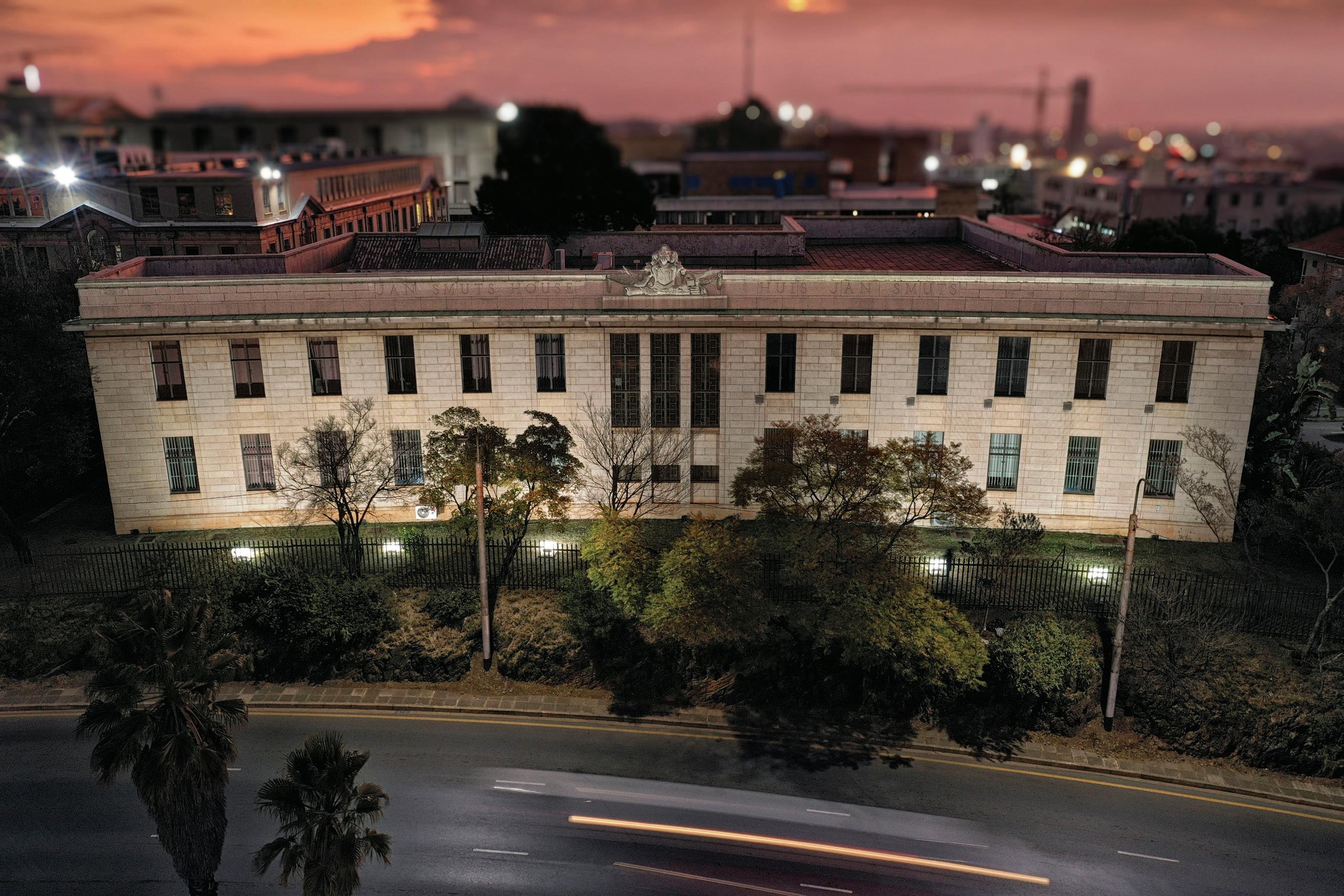
Home of treasures
A twilight view of Jan Smuts House on the Wits Campus. The building is a living memorial to the international statesman and houses the South African Institute of International Affairs, established in 1934. Its library has United Nations depository status, housing UN periodicals, official records, treaties and yearbooks.
 Image: Brett Eloff
Image: Brett Eloff
Emergency and intensive care specialist looks back at his career as an adventure

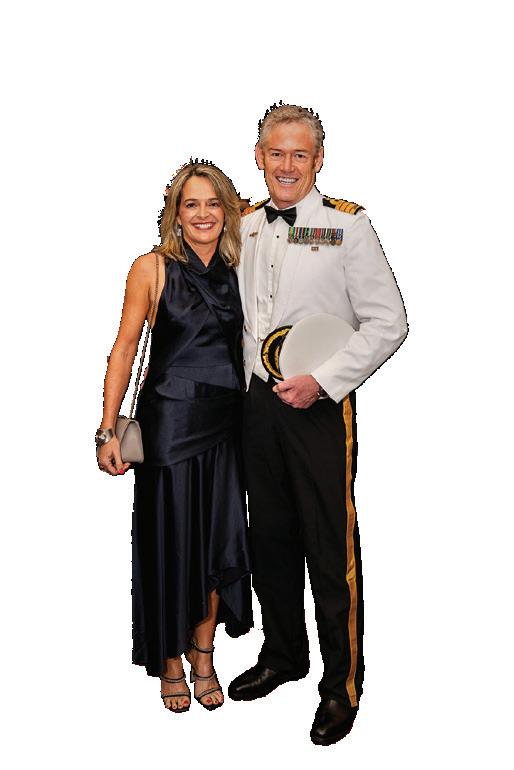

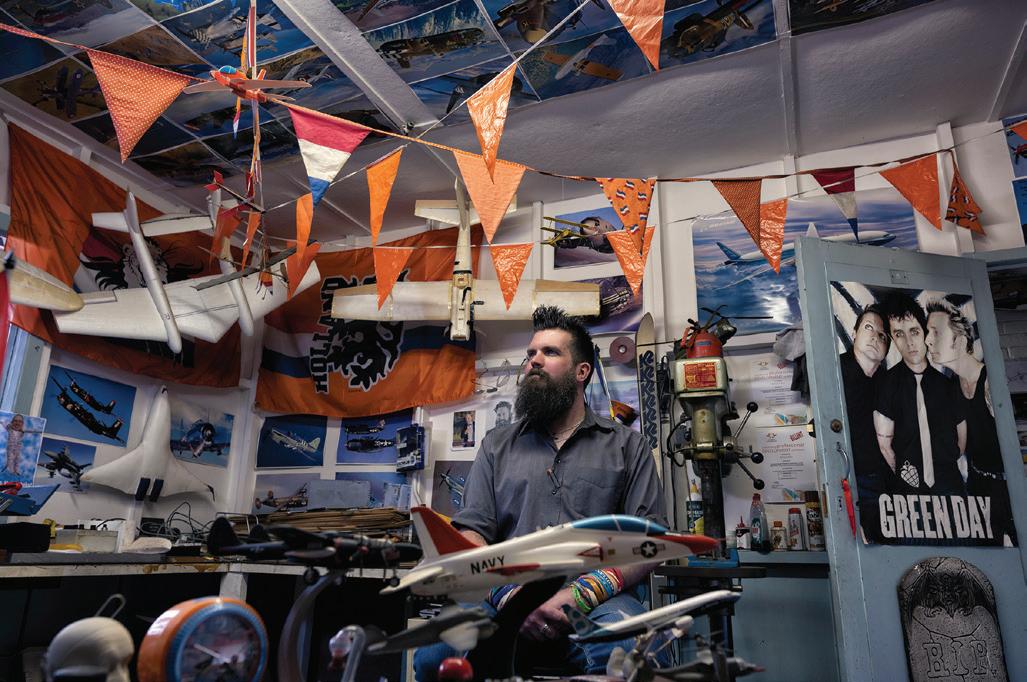
Dr Keneiloe Molopyane joins her second exclusive explorers club, the prestigious Explorers Club 50, class of 2023

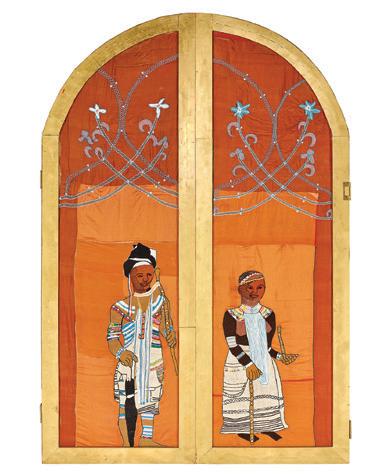

2 Wits Review April 2023
46 Witsies with the Edge ‘Doing the right
Cover image: Closed view of the Rose Altarpiece, Anthea Pokroy/Keiskamma Trust
Witsie
International
Dr Anthony Holley
Cover feature Keiskamma Art Project Threading stories of sorrow and hope over two decades 08
Image: Brett Eloff
Sport Kings of Gauteng Blues rock 2023 Varsity Cup
issue Editor’s Note ............................................ Letters ....................................................... Sport .......................................................... Research .................................................. Witsies with the Edge ......................... International Witsies ............................. Books ......................................................... In Memoriam .......................................... Wits End ................................................... REGULARS 05 06 08 19 32 38 58 70 79
On a journey of reminiscences
Image: © Dom Barnardt/ Varsity Sports
In this
54 Profile Denis Hirson
Image: ©Joseph Byford
28
Interesting Offices Collection obsession
A chance meeting with Prof Lino Ravaglia at a Wits Open Day in 1999 convinced Michael Boer to choose engineering rather than pursuing a career as a pilot
M A G A Z I N E
Editor Peter Maher

Contributors
Heather Dugmore, Ufrieda Ho, Jacqueline Steeneveldt, Professor Chris Thurman
Photography
Brett Eloff, Chanté Schatz
Graphic design
Jignasa Diar
Printing
Remata
Published by the Office of Alumni Relations, University of the Witwatersrand, Johannesburg.
Address: Private Bag 3, Wits, 2050, South Africa / Tel +27 (0)11 717 1090 Email: alumni@wits.ac.za, www.wits.ac.za/alumni www.facebook.com/witsalumni/ www.twitter.com/witsalumni www.linkedin.com/groups/76204 www.flickr.com/groups/witsie/
Update contact details: www.wits.ac.za/alumni/ updateyourdetails

Subscriptions per copy: South Africa R50 (incl. VAT & postage) International R100 (incl. postage)
64
Historical Feature Regina Twala

Payment options: Online payment using a Visa, Mastercard, American Express or Diners Club credit card at: www.wits.ac.za/alumni/payment or by electronic transfer or bank deposit to: First National Bank, Account No. 62077141580, Branch Code 255-005, Ref. No. 29613 (+ your name) or by cash or credit card payment at the Alumni Office.
Erased pioneer earns her rightful place News Dr Adam Pantanowitz

18
Biomedical and electrical engineer’s (a)head for innovation
WITSReview is published twice a year. The views expressed in this publication are not necessarily those of the editor, the Office of Alumni Relations or of the University of the Witwatersrand. ©Copyright of all material in this publication is vested in the authors thereof. Requests to reproduce any of the material should be directed to the editor.
WITSReview Magazine, Volume 49, April edition 2023
Image: Brett Eloff
Image: Chanté Schatz


4 Wits Review April 2023 For more information visit https://wits100.wits.ac.za/ Wits. For Good
An intelligent future beckons
Our world is going through major upheavals.
of academic excellence, innovation, and social
“Wits has played a pivotal role in shaping the country’s history, and its impact on South Africa’s future continues to be significant. As alumni, we have a critical role to play in build ing and sustaining confidence in our University. Our individual achievements and successes are a reflection of the excellent education and training we received at Wits.

“The challenges facing our country and the world are daunting, but we must not lose sight of the role that our alma mater plays in creating change. Let us continue to support and build confidence in Wits, and work together to make a positive impact on society.”
Peter Maher Director of Alumni Relations
a sign of inevitable scientific and technological progress that is the hallmark of human existence. Mulling over the challenges we face and how to frame it in the context of Wits, I took this as an ideal opportunity to ask ChatGPT to write an editorial. With minor edits, this is what it said:
“We have a unique connection to one another and to our institution. We are all proud graduates of a University that has a rich history
I couldn’t have said it better myself! Wits is indeed thriving, and through its centenary campaign, tremendous donor investments are being made that are an expression of confidence in the University. Some of these include three Mastercard Foundation projects worth more than R400m, the Zylstra family’s R200m gift for the Wits Brian and Dorothy Zylstra Sports Complex, a R55m Anglo American donation to repurpose the Planetarium into a multidisciplinary Digital Dome, and a R52m Student Support Endowment to rename the AMIC Deck the Sibanye Stillwater Innovation Bridge.

As we enter a brave new AI world, ChatGPT offered this closing paragraph:
“I hope you enjoy this latest edition of the WITSReview and that it reminds you of the important role you play as a member of our alumni community. Thank you for your ongoing support for Wits, and for your contributions to making the world a better place.”
5
Editorial
Memories came flooding through
Another “tour de force” publication: and arriving in the Christmas-New Year week just added to my reading enjoyment. One hundred years! My mom M L Hicks (BA 1938) would be proud.
Sad to see that John Kane-Berman (BA 1968) has died. I messed around the SRC/ NUSAS for a year with him, a year when Neville Duke − of NUSAS – and I sat together for geography lectures in between playing klaberjas
A long history with Wits
Congratulations on yet another outstanding centennial issue of WITSReview in November 2022. Being a “cover-to-cover” reader, I was intrigued and fascinated to discover my father FA Brandt in the photograph of the 1928 1st XV Rugby Team! While his passion for sport never waned (rugby, swimming, water polo, springboard diving), he completed many degrees at Wits, including an arts degree and several science degrees. He studied mostly part time as he could not afford full time studies and therefore concurrently embarked on his more than 50-year long career at the South African Institute for Medical Research. All my father’s direct descendants and their families are proud Wits alumni, the youngest being his great-grandson Gareth David Wood (BSc Eng 2021, MSc Eng 2022) who received his master’s in engineering in December 2022, nearly a century later!

My sister Vivette Wood, née Brandt (BSc 1957, MSc 1963) completed her bachelor of science degree in 1957, followed by an honours and master’s; her husband Henry Wood (BSc Eng 1956) also obtained an electrical engineering degree. Following in his father's footsteps, their son Derek Wood (BSc Eng 1987) completed the same degree; his wife Patricia, née Pieters, graduated cum laude with BPrimEd in 1989.
My daughter Monica McKay, née Broccardo (MBBCh 1991) completed her medical degree at Wits in 1991, followed by College of Medicine DCH in 1995 and FCPaed (SA) in 1999. My son, Stephen Paul Broccardo (BSc Eng 1998, MSc Eng 2003, PhD 2015), upholding the family engineering tradition, completed a metallurgical engineering degree, master’s and PhD in 2015. Every good wish to this great institution as it enters its second century!
Louise Broccardo (née Brandt) (BA 1959, BA Hons 1966)
A brief moment in the lights at Jan Smuts Airport welcoming Robert Kennedy in June 1966, where I led a singalong of “For he’s a jolly good fellow”. Next day, a visit from the Bureau for State Security [it was SA’s main intelligence agency from 1969 to 1980]. Threats of deportation, as I was an alien from Northern Rhodesia (Zambia). Fun days? No.
I just went covert, graduated and came to Canada. Two years later to the day, in June 1968, Kennedy was assassinated. Sirhan Sirhan was released on parole in August 2021.
Then, 40 years later, to find a film of my singing was part of a documentary RFK in the Land of Apartheid: A Ripple of Hope (2008) produced by Hunter College, City University of New York about the visit of Kennedy.

Even with other qualifications and teaching at universities in Australia and Canada, I identify as a Witsie. Some things stick with one, eh!
Bill Knott
6 Wits Review April 2023 Letters
(BA 1967) Portage la Prairie, Manitoba, Canada
Robert Kennedy in the Great Hall in 1966
We have quite a history with Wits
Seeing the photo of my grandfather Alfred Goldstein (BSc Eng 1922) in the WITSReview Vol 47, (seated at the centre) reminded me of my family’s four-generation-history with Wits. My father Anthony Goldstein (BSc Eng 1948) graduated as a civil engineer and continued to teach at Wits till he was well into his 70s. His brother Daniel (BSc 1951, BSc Hons 1952, MBBCh 1955, DSc Med 1976); Generation 3: I got a medical degree and master’s in medicine from Wits – and currently am a visiting professor in the SAMRC/Wits Centre for Health Economics and Decision Science-PRICELESS SA. My brother Kevin Goldstein is a professor in the Physics Department; Generation 4: My daughter Kate Rees (MBBCh 2007) graduated as a doctor and is currently a public health medicine specialist. My daughter Nicki (BA 2010, MBBCh 2014, DTM&H 2019) got a bachelors in art, then studied medicine and now is specialising in microbiology. We have quite a history with Wits!
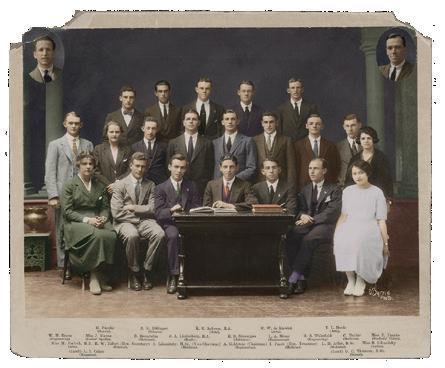
Professor Susan Goldstein (MBBCh 1980, DHSM 1992, MMed 1996)
*Ed’s note: From the alumni archives on the first and second generation Goldsteins:
Alfred Goldstein was born in 1897 and attended St John’s College, where he was head boy. He graduated in 1922 and joined the South African Railways as a pupil engineer. During World War II he was a major in the engineering corps and helped in the construction of the railway line from Haifa to Beirut. He was recalled to the South African Railways, and eventually became chief civil engineer in 1956. After retiring he worked
for a while on the railway from Swaziland to what was then Lourenço Marques. He was also the SRC chairman during his time at Wits.
Second generation: Anthony Goldstein worked on several iconic big buildings and structures such as the Queen Elizabeth Bridge, the Civic Centre, Absa Towers and the first section of the M1 Highway in Johannesburg. He consistently supported the profession, chairing a division of the South African Institute of Civil and Structural Engineers.
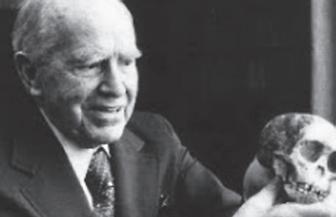
Third generation: Professor Susan Goldstein worked in primary healthcare in Alexandra and Soweto until 1992, when she specialised in community medicine graduating in 1996.
I remember another mentor
The article on Phillip Tobias in WITSReview Vol 48 makes no mention of his neglected, ignored mentor, Professor Raymond Dart, who was a really great and compassionate man.
On one occasion, a bunch of students, post lecture, were discussing with him, while another student (dental, not medical) looked at a 20 000year-old pelvis. The student managed to drop it onto the desktop, whereupon, like Caesar's Gaul, it split into three pieces. You’ve never heard such a silence. After a few seconds a quiet voice said: “Yes, my boy, it could happen to any one of us”.
United States
Stay
7 Letters
in touch: Please share your news and remember to update your contact details. Please email letters to alumni@wits.ac.za
Professor Raymond Dart
Joe Marcus (MBBCh 1953) Philadelphia,
SRC, 1922
The Blues are kings of Gauteng
John Okonkwo of Wits breaks despite efforts of Clyde Lewis during the 2023 FNB Varsity Cup rugby match on 27 March 2023. The Blues had a superb start to the season, relegating the defending champions, TUKS, to the FNB Varsity Shield for the first time in the history of the competition with a 33-21 win. On 28 February, trailing 0-30 at halftime, Wits produced a great performance in the second half to beat the University of Johannesburg 35-33.

Sport
Image: © Dom Barnardt/Varsity Sports

Socials
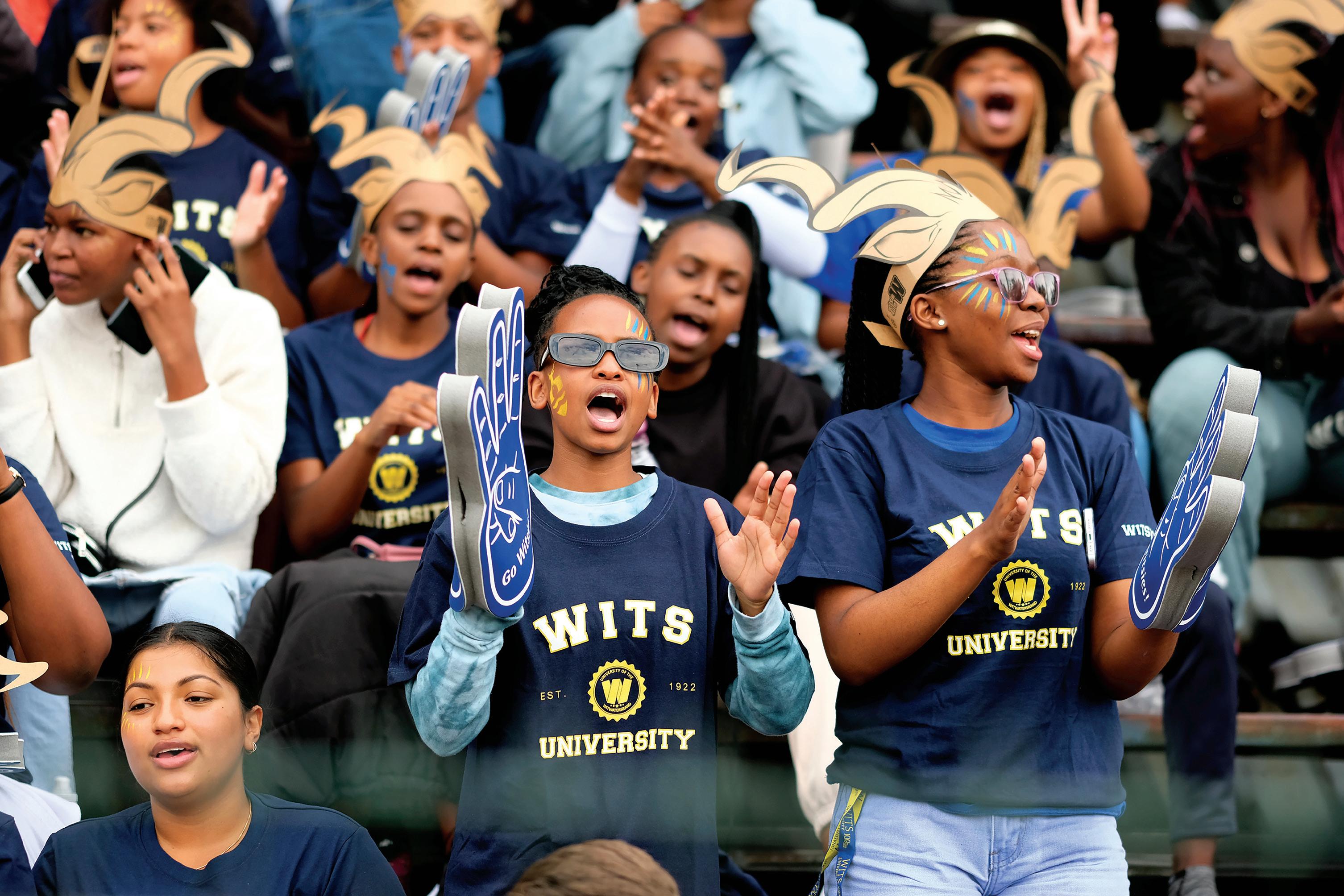
Welcome
Witsies4Life
 Photo: Vivid Images
Photo: Vivid Images
Thousands of new students made their way to the Wits Football Stadium on East Campus on 17 February to watch the 2023 Wits Spirit Game. The annual tradition hosted by Wits Sport and Alumni Relations saw firstyear students “revealed” as new Witsies. Dressed in their blue and gold regalia they cheered Wits FC to a 3-1 victory over Orlando Pirates. new
Wits Spirit Game 2023
Thirty years of good health
More than 60 alumni from the Medical Class of 1992 celebrated their 30th anniversary since graduating with a full itinerary over the weekend of 8-9 December 2022. Activities included tours of Medical School, the Wits Campus as well as a special dinner at the Wits Club.
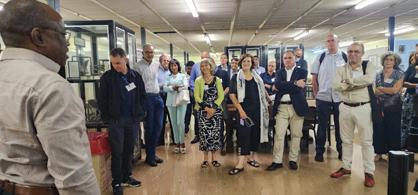
Above: Professor Amadi Ihunwo, head of the School of Anatomical Sciences during a tour of the Anatomy (Hunterian) Museum
When planners come together
Alumni from the School of Architecture and Planning gathered to celebrate their 30th anniversary on 10 March 2023. Professor Mfaniseni Sihlongonyane (MUD 1996) led a walkabout through the John Moffat Building, and shared information about the current planning programme. The group has had careers in the private, public and academic sectors, and the majority still live in South Africa.
Above: Liz Warren (nèe Boyes), Vincent Maila, Sharon Lewis, Steve Angelos, Caswell Mthombeni, Charles Gibbs, Nina van Heerden (nèe Rautenbach), Neil Schloss, Marion Frew (nèe Leff) and Mark Roux
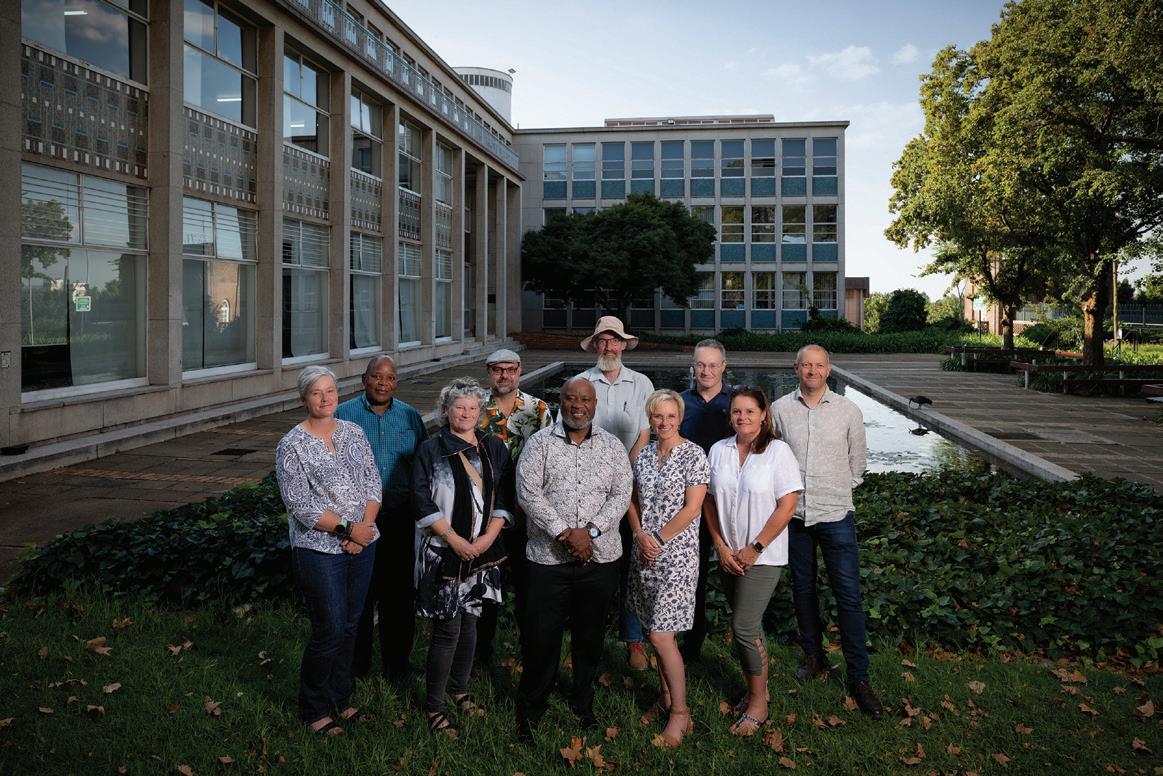
12 Wits Review April 2023 Reunions
Image: Brett Eloff
Town Planning Class of 1994
MBBCh Class of 1992




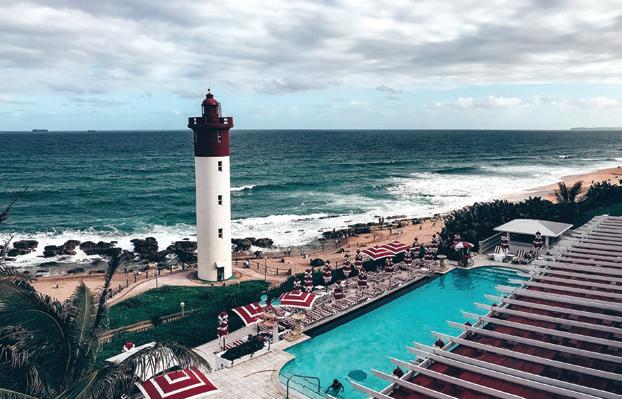

13 We l k forward to seeing you! Save the date Enquiries: events.alumni@wits.ac.za Tel: 011 717 1097 10-14 September founders’ tea 3 September cape town 11 May umhlanga 3 August polokwane 14 June upcoming reunions - 2023
Fit for purpose


Cheryl Benadie was the guest speaker at a Young Alumni Careers and Networking event held at the Wits Club on 29 March 2023. Under the topic “The Secret To Being Future Fit” Benadie shared from her own experi ence in journalism, publishing, training and fundraising on how to use life’s challenges to unlock personal power. She illustrated how limiting beliefs could hinder progress in careers, finances and relationships. The young alumni who braved the rainy Johannesburg evening, heard about the need to be self-aware to “reinvent” oneself to meet the changing work requirements of a modern workplace.

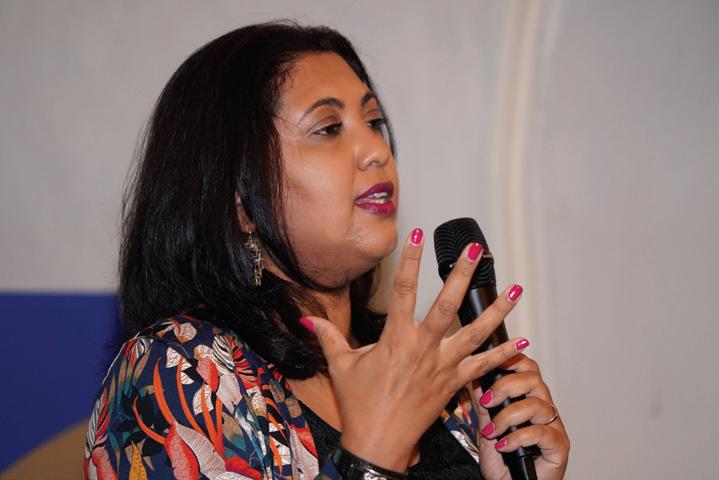
14 Wits Review April 2023
Socials
Images: Peter Maher
Young Alumni Networking event
Residence
Upgrades for a classic
Wits spaces
The renovation of the Knockando Halls of Residence (Lighton Hall and Williams Hall) was completed earlier this year. The all-male undergraduate residence, which is just North of the Wits University Donald Gordon Medical Centre and a 10-minute walk from the Medical School, now has a more contemporary look with heritage and council approval.

15
Images: Nhlamulo Ngobeni



16 Wits Review April 2023
“The Hub will inspire our children, motivating their hopes and aspirations.”
Above: The new state-ofthe-art Data Sciences and Innovation Hub Bottom left: Rural Campus team Bottom middle: Inside the facility Bottom right: The Hub has been embraced by local communities
Wits spaces
Agincourt
Special milestone for public health research
A new state-of-the-art 21st century Data Sciences and Innovation Hub, launched at the Wits Rural Campus in November 2022, marked 30 years of rural public health research.

The building is the new home of the Medical Research Council/Wits-Rural Public Health and Health Transitions Unit (Agincourt), which is a health and socio-demographic surveillance system (HDSS). The Agincourt HDSS study area is comprised of 31 villages and 120 000 people in Mpumalanga on the border of the Kruger National Park. Its population and health priorities resemble many rural communities in sub-Saharan Africa. As such, the unit responds to a scope of rural public health issues to produce health research and data which is translatable to other rural sub-Saharan communities.

Wits University first established a presence in Bushbuckridge in 1979 through Professor John Gear (MBBCh 1967, PDH 1972, DTM&H 1979, DSc honoris causa 2017). Two of Prof Gear’s students and fellow alumni Professor Stephen Tollman (BSc 1979, MBBCh 1984, MMed 1999) and Professor Kathleen Kahn (MBBCh 1984) went on to pursue postgraduate studies at Harvard University, but returned to South Africa and established the Agincourt Field Research Centre in the 1990s. The centre generated population-based data based on long-term health and socio-demographic surveillance and has continued to do so for three generations.
“The Hub is a beautiful, highly functional structure, funded by the Wolfson Foundation UK, Beare Foundation SA and Wits – that enjoyed special care from campus planning,” Professor Tollman wrote to Alumni Relations. “Memorably, as a member of the Community Advisory Board put it, the Hub will inspire our children, motivating their hopes and aspirations.”
17
Images: Chanté Schatz
Cream of the crop
Professor Lynn Morris (BSc 1982, BSc Hons 1983) and Professor Bavesh Kana (BSc 1997, BSc Hons 1988, PhD 2002) have been appointed to the National Advisory Council on Innovation. They will provide guidance to the South African government on how innovation can be harnessed. Professor Morris is currently deputy ViceChancellor for research and innovation at Wits, while Professor Kana is director of the Science and Innovation Department/National Research Foundation’s Centre of Excellence for Biomedical TB Research (see page 35).
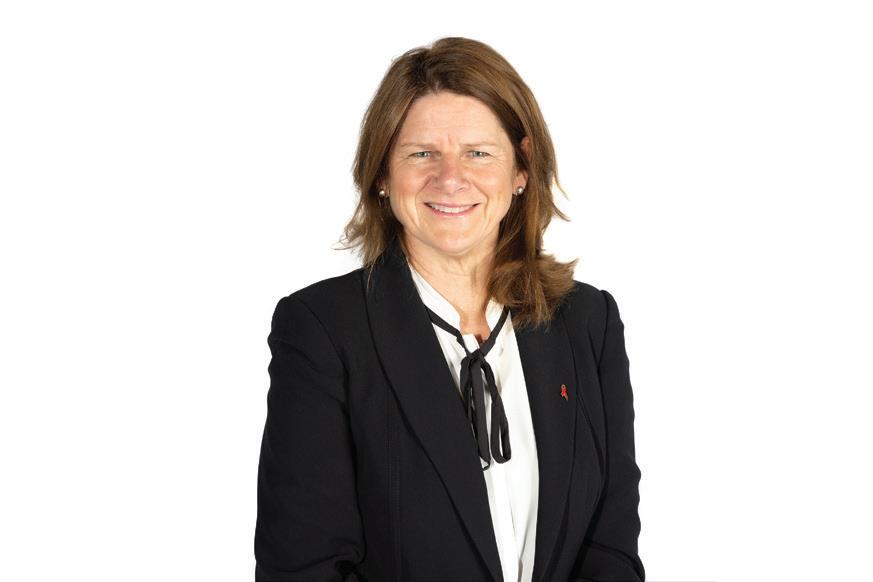
Biomedical and electrical engineer Dr Adam Pantanowitz (BSc Eng 2007, BSc Eng 2008, MSc Eng 2022, PhD 2022) has been appointed as chair in innovation and director of the Wits Innovation Centre and as the inaugural Angela and David Fine Chair in Innovation. Pantanowitz is well-known for initiating and leading the first group in the world to connect a human brain live and mobile to the internet in a project called the Brainternet – a term he coined. He joined the School of Electrical and Information Engineering at Wits in 2009 where he lectures in engineering and medicine.
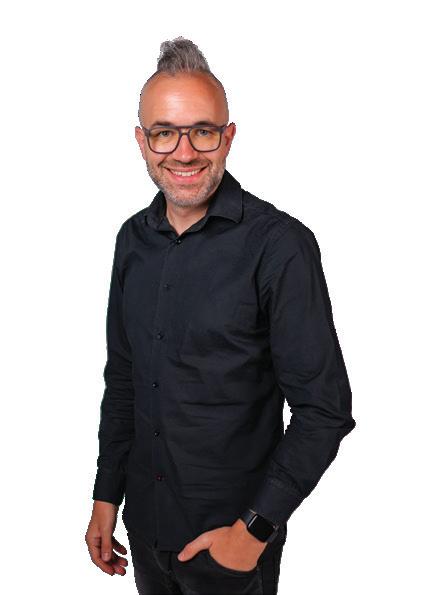
World-renowned palaeoanthropologist, Professor Lee Berger (PhD 1994, DSc 2014) has been appointed as a National Geographic Society Explorer in Residence. He will remain in an honorary capacity at Wits University. Professor Berger’s excavations have led to some significant findings including Australopithecus sediba in 2008 and Homo naledi in 2013 at the Rising Star cave system.

News
Image: Brett Eloff
Image: Shivan Parusnath
Image: Chanté Schatz
Research
Stem cell transplant yields one more cure
An international group of researchers, including Wits scientists, has identified a third case of HIV infection cured by stem cell transplantation. “Haematopoietic” refers to an immature cell that can develop into all types of blood cells, including white blood cells, red blood cells, and platelets. Haematopoietic stem cell transplantation for the treatment of severe blood cancers is the medical intervention that previously cured two people living with HIV. Haematopoietic stem cells are found in the peripheral blood and the bone marrow and are also called blood stem cells. An international group of physicians and researchers, including Dr Annemarie Wensing of Ezintsha, a division of the Wits Health Consortium, and Dr Monique

Nijhuis in the HIV Pathogenesis Research Unit at Wits, has now identified another case in which HIV infection has been shown to be cured in the same way. In a study published in Nature Medicine, the successful healing process of this third patient was for the first time characterised in great detail virologically and immunologically over a 10-year duration. An infection with the human immunodeficiency virus was previously considered incurable. The reason for this is that the virus “sleeps” in the genome of infected cells for long periods of time, making it invisible and inaccessible to both the immune system and antiviral drugs.
Source: Wits research news
Background: A stylised view of a haematopoietic stem cell surrounded by red blood cells. These stem cells give rise to all the blood cell types
Gallo/Getty Images
Research
Headwaters of the Zambezi River in Angola Gallo/Getty Images

For love of planet –and peat

Peatlands are a particular type of wetland ecosystem in which dark, loamy peat soil is produced. They store more carbon than all the world’s forests combined. Global maps and inventories of peatlands are inconsistent, though there is more data for the northern hemisphere compared to the southern hemisphere and the tropics. PhD candidate and geospatial ecologist in the School of Geography, Archaeology and Environmental Studies at Wits, Mauro Lourenço (BSc 2017, BSc Hons 2018, MSc 2019), quantified and mapped peatland deposits in the Angolan Highlands under the supervision of professors Jennifer Fitchett (BSc Hons 2012, MSc 2013, PhD 2015) and Stephan Woodborne. Using remote sensing to estimate, he found that there are about 1 634 km2 – about 230 000 full-sized soccer fields – of peatland in the Angolan Highlands. This region is hydrologically and ecologically important as it is the primary source of water flowing into the Okavango Delta, a UNESCO world heritage site.
Source: The Conversation
Earth's history in delicate detail
An unassuming road-cutting is producing thousands of exquisitely preserved fossils in the Sutherland District of the Northern Cape. In research published in Communications Biology, experts from the Albany Museum, Rhodes University and the Evolutionary Studies Institute at Wits, among others, explain how these tiny fossils of plants and insects, many of them only millimetres long, reveal a previously unknown ecosystem on the quiet shores of a pool 266 million years ago.

Dr Rosemary Prevec (PhD 2005), the principal author of the paper, is based at the Albany Museum, Makhanda in the Eastern Cape. She has been curator and head of the Earth Sciences Department since 2016 and research associate in the Botany Department at Rhodes University.
Plants, insects and small things tend not to share the limelight with dinosaur and hominid discoveries, but the stories they tell can be just as fascinating and their message powerful.
“We currently know a fair bit about the reptilian animals that roamed the Karoo of South Africa during the middle Permian Period, a time long before the dinosaurs appeared. These creatures included the predecessors of tortoises and the strange and lumbering therapsids that would later give
rise to the mammals, but we have little idea about what else was around at the time,” the researchers’ statement reads.
Scientists are now gaining a better understanding of what the world looked like before the onset of two key extinction events in Earth’s history, at the end of the Guadalupian Epoch (about 260 million years ago) and then the largest extinction event ever, at the end of the Permian Period (about 252 million years ago). “Our new fossils will change ideas about the evolution of some important plant and insect groups and their distributions across the super continent of Pangaea. The superb quality of fossil preservation means that soft-bodied organisms that very rarely preserve in the fossil record are present at the site.”
For example, a new, early damsel-fly (right) and hundreds of tiny nymphs belonging to the stoneflies, a group that still lives in the streams today, are the oldest records of Gondwana.
The authors say they are still finding new fossils every field season. “We are also working hard to describe each of the beautiful plants and creatures that have emerged and are trying to figure out why fossils were preserved so beautifully in this area.”
Sources: The Conversation and Communications Biology
invertebrate and plant fossil discoveries from the site known as the Onder Karoo


Images: Communications Biology

22 Wits Review April 2023
Research
Perpetual jet lag

People living with HIV have a significantly delayed internal body clock, consistent with the symptoms of jet lag, a study published in the Journal of Pineal Research shows. Researchers from Wits, the University of Cape Town and international colleagues studied people living in the Mpumalanga province, South Africa, where nearly one person in four is living with HIV. They found that physiological daily rhythms, as measured by the hormone melatonin, were delayed by more than an hour on average in HIV positive participants. Their sleep cycle was also shorter, as their sleep started later and finished earlier. This may contribute significantly to an increased burden of health problems experienced by people living with HIV including risk of cardiovascular, metabolic, and psychiatric disorders. PhD candidate in the Wits Sleep Laboratory and first co-author in the study Kirsten Redman (BSc 2012, BHSc Hons 2012, MSc Med 2017), says: “We realise the impact that this can have for people living with HIV. These disruptions are known to affect the cardiovascular system and correcting them may help better control cardiometabolic disease risk in this cohort.” Dr Xavier Gómez-Olivé (PhD 2014) another co-author of the article, based at the study site in Mpumalanga at Agincourt, says: “Our findings identify an urgent research topic. The next step must be to establish if the same body clock disruption exists in people living with HIV who are younger and who live in other countries.”
Source: Wits research news
23
Research
Gallo/Getty Images
Research
 Children from Alexandra township play on the banks of the Jukskei River
AFP via Getty Images
Children from Alexandra township play on the banks of the Jukskei River
AFP via Getty Images
Flowing with microbes and an app
The Accessible Greywater Solutions for Urban Informal Townships (URBWAT) project is providing sustainable water solutions for the Alexandra township in Johannesburg. Three wetlands have been constructed to treat greywater run-off that leads into the Jukskei River. Residents who carry their tap water home use it for cooking, bathing and cleaning, but the disposal of this wastewater with inadequate drainage systems poses health and environmental risks. “There is probably a lot of black water too in greywater in South Africa, which has implications for people’s health,” says Professor Craig Sheridan (BSc Eng 2000, PhD 2013), the URBWAT project lead. Using gravel-like beds with plants, a microbial biome has been established to essentially “eat” chemical components in discarded wastewater. “Plants provide microhabitats for these microbes. It’s an ecosystem service that we’re mimicking from a natural environment under really stressed conditions,” says Sheridan. “What we’re trying to do, is see if there is a way for us to treat it in-situ so that it doesn’t just run through and it gets somewhat purified.”

Potable water test-strips app
Professor Sheridan is also director of the Centre in Water Research and Development (CIWaRD) and through the Claude Leon Foundation’s generous funding the centre launched its research on a potable water test-strips app recently. The idea is to dip a test strip into water, photograph an image of it and upload it onto the app, which will then generate an answer to the question of whether the water is potable, and if not, what must be done to make it potable. The team recently recruited its first master’s in electrical engineering student to start working on the app. With the completion of all process stages, the app should be available to the market by the end of 2024.
Source: Wits research news
Gallo/Getty Images
OFFICES
INTERESTING
Dr Tammy Reynard
(BA 2003, BA Hons 2004, MSc 2006, PhD 2013)
Curator at the Origins Centre

Location:
Origins Centre
Images: Brett Eloff
Favourite object:
“My favourite item would be my ochre collection – hundreds of pieces of iron-rich red, yellow, purple pieces of powdery rocks from all over southern Africa and beyond. Ochre has been used for many years for ritual and practical purposes – and is still widely used today.”

Interesting Offices
Michael Boer
(BSc Eng 2003, MSc Eng 2016)
Lecturer in School of Mechanical, Industrial and Aeronautical Engineering
Location: North West Engineering labs

Favourite object:
I'm a fountain pen addict, my first bottle of ink (Pelikan Blue-Black) lives on the very busy desk. It was a gift from my mom. Many students in the School use fountain pens now too.

Interesting Offices

Professor Claudine Storbeck
Director at the Centre for Deaf Studies

Location: Centre for Deaf Studies
Favourite object:
Professor Storbeck loves the giant “Grief” painting done by a mother of a deaf child. “It’s a daily reminder of the community we serve and partner with. It’s subtle yet powerful, avoiding the ‘missing sense’ . ”
Witsies with the Edge
Several Wits-trained architects have been invited to participate at the 18th Architecture Biennale – which runs from 20 May till November 2023 in Venice. They include: Kate Otten (BArch 1987) from Kate Otten Architects; Tanzeem Razak (BAS 1997, BArch 1999) from LemonPebble Architects; Nabeel Essa (BAS 1998, BArch 2000) from Office 24/7; and Sumayya Vally (BAS Hons 2014, MArch Prof 2015). For the first time in history the exhibition focuses on Africa and its diaspora, titled “The Laboratory of the Future”. It is curated by Lesley Lokko (OBE), a Scottish-Ghanaian architect and novelist. In her opening presentation about the programme she said: “A vision of a modern, diverse, and progressive society is seductive and persuasive, but as long as it remains an image, it is a mirage. Something more than an image is needed and architects are historically key players in translating images into reality…” Images




www.archdaily.com/
Awards
PIPPA HUDSON
Best Daytime Show at the 2022 Radio Awards
Pippa Hudson (BA 1996, BA Hons 1997) hosts the lunchtime show for the Cape Town-based radio station Cape Talk and shared her career journey with Alumni Relations: “I was conflicted up to the very last moment about what I would study, finally giving up the offer of a place in Medical School. I had to speak to the Dean of the Arts Faculty about registering late – at the time that was Professor John van Zyl (PhD 1973), who gave me excellent advice on my curriculum choices. I never had the sense of aspiring to follow in anyone’s footsteps; rather just a sense of wanting to be a storyteller of some kind. There was no media studies or journalism course at Wits at the time, so I opted for a general Bachelor of Arts with English and philosophy as my majors.

“By the time I finished my honours and was wondering what on earth I would do next, I reconnected with Prof van Zyl, who had left Wits to establish the ABC Ulwazi Broadcasting School. I signed up for their short course in radio news and actuality, and never looked back.
“I don’t regret any of the steps that got me here, including the decision to scale back while my kids were younger, even though it set me back quite substantially in terms of career trajectory and earning potential.
“If I could change anything at all it would be my own mindset – I spent so much time doubting… whether I’d done the right thing dropping out of medical school, whether I could manage a station, whether I had what it took to host a show, not to mention over-thinking every piece of criticism that came through in the early days. I won’t say I’m immune to it now, but the difference is that these days I’m able to look at a nasty or critical comment, assess whether it is valid or constructive, learn from it if it is, and hit the delete button if it isn’t. I only wish I’d got here a lot sooner!”
Do you have insider tricks up your sleeve to encourage others to talk and reveal more of themselves?
“I do my homework and research hard, so I can be sure I’m asking meaningful questions that will encourage the guest to open up about their experience or field of expertise. I also believe in the importance of authenticity – I try to be the same person on air as I am off air – with warmth, curiosity, respect, and a willingness to listen.”
You were at Wits during the 1990s, do you have any memories of your time on campus?

“I lived on campus in Sunnyside Res for my first two years, and still treasure the friendships I made there. I also still tell everyone what a beautiful campus it is and how wonderful the social life was! I have very fond memories of far too many hours spent chatting to friends in Senate House, eating the cheap giant toasted Chelsea buns that would sustain us for the day, a short-lived season as an attempted rower, and a far longer season of spending Friday afternoons at the Boz. I worked as a barmaid and waitress at Wings Beat Bar across the road from campus, and looking back I realise what a privilege it was to be there to witness the birth of some of our best rock bands during that time, from Wonderboom and Urban Creep to The Usual, Henry Ate and many others – a number of them populated by my fellow students in the Arts Faculty.
“I remember what a privilege it was to be taught by some absolutely brilliant lecturers who made their subjects come alive: David Medalie (BA 1984, BA Hons 1985), Tim Couzens (PhD 1980), Ann Smith, Geoff Hughes (see page 77), Professor Anthony Woodward. I wouldn’t be where I am today without the encouragement of Prof John van Zyl, who made me believe in my own potential, and nudged me in the direction of the medium which has become my life-long passion.”
Witsies with the Edge 33
Witsies with the Edge
Awards
PROFESSOR FRANCO FRESCURA
Professor Franco Frescura (BArch 1977, MArch 1981, PhD 1986) was acknowledged for his lifelong contribution to heritage, architecture and cultural studies. He works part-time as director of education at the Phansi Museum in Durban and is a visiting professor at Wits.


Vincent Carruthers, who received a Gold Medal from Wits in 2016, was also acknowledged with a Gold Medal for his “substantial contribution towards the research, recording and conservation of the natural, cultural and historical heritage resources of the Magaliesberg and beyond”.

HARRY BRAND
Professor Harry Brand (BArch 1960) was rec ognised in the field of culture, art, and sport in Israel for his innovation and contribu tion to changing the Israeli architectural landscape over 50 years. He moved to Israel in 1962 and founded the Israel Association of Planners, where he served as its first chairman, pio neered the accreditation of architectural schools on behalf of the Council for Higher Education, and served as a professor at the Technion architectural school. When asked about his favourite project he said he was proud of quite a few: “The one in Tefen was a ground breaking kind of project. It was unique in its time. That led to the Jerusalem Technology Park, which was more of an urban development. The project I did for Graham Beck in Jerusalem, the Beck Science Centre, is a good building, but no one particular child is preferred over the other. I’ve enjoyed doing them all. It has been a privilege.”
WENDY FISHER
Wendy Fisher, née Kirsh, (BA 1978) was one of the recipients of the 2022 Women’s Entrepreneurship Day Organisation Awards, presented each year at the United Nations “to a select group of women whose accomplishments and impact are of the highest order”. A trained clinical psychologist and artist, Fisher is also a notable philanthropist. She is president of the Guggenheim Foundation and founder of the non-profit A4 Arts Foundation, among others. In her acceptance speech she said: “I see art and entrepreneurs as being truly interconnected. Both require creativity, commitment and vision and they come together as social entrepreneurship where innovation drives community cohesion and social enrichment.”

34
Review April 2023
Wits
2022 Simon van der Stel Gold Medal of the Heritage Association of South Africa
Bonei Zion Prize
2022 Women’s Entrepreneurship Day Organisation Award
Image: Yonit Schiller
Professor Franco Frescura
Awards
PROFESSOR BAVESH KANA
Gold Medal at the 9th Scientific Merit Awards of the South African Medical Research Council
Director of the National Research Foundation Centre of Excellence for biomedical TB research at Wits, Professor Bavesh Kana (BSc 1997, BSc Hons 1998, PhD 2002), was acknowledged for his substantial and influential contribution to health, especially in the developing world. He was appointed to the National

WILLIAM KENTRIDGE
Olivier Awards: Winner, Outstanding
Advisory Council on Innovation to advise the South African government on how to harness innovation in March. At the same event, Professor Valerie Corfield (PhD 1985) was presented with a Lifetime Achievement Award for her work in molecular genetics, investigating the genes and mutations that cause heart diseases in South Africa. She continues to be an enthusiastic mentor who champions science through workshops for schoolchildren and teachers across South Africa.
In 2017, he was awarded the Order of Mapungubwe Silver, the highest civilian honour bestowed by the President of the Republic of South Africa. He was a postdoctoral fellow at the Graduate School of Arts and Sciences at Harvard University and was the youngest South African to receive the HarvardSouth Africa Fellowship.
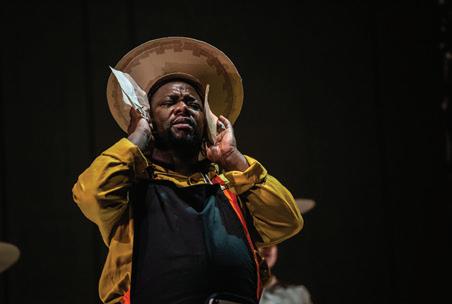

the Greek myth of the Cumaean Sibyl, and wrestles with the human desire to know our future. The opera premiered in the US during March 2023. Kentridge was announced as the winner in the “Outstanding achievement in Opera” category at the Society of London Theatre on 2 April 2023.

SEE MORE WITSIE HONOURS
https://www.wits. ac.za/news/sources/ alumni-news/
Image: www.kentridge.studio
35 Witsies with the Edge
Witsies with the Edge
Appointments
Internationally respected AIDS researcher Professor Quarraisha Abdool Karim (BSc Hons 1984) was elected as the 7th president of the World Academy of Sciences (UNESCO-TWAS) for advancing science in developing countries. She was also nominated among Forbes Africa’s 50 over 50 – a compilation of women scaling new heights and inspiring the next generation of leadership on the continent. She now co-chairs a 10-member technical group set up by UN secretary-general Antonio Guterres. In addition she is professor in clinical epidemiology at Columbia University and pro vice-chancellor for African Health at the University of KwaZulu-Natal.
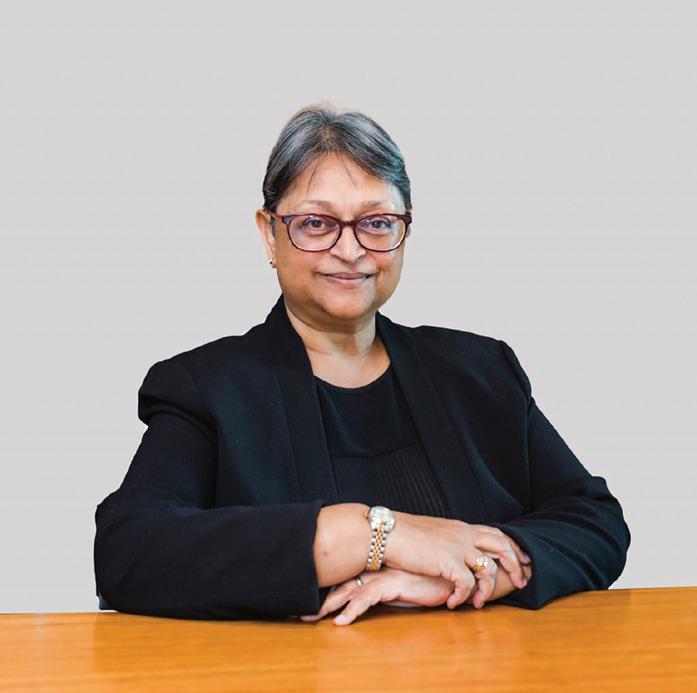
Passionate data scientist Professor Vukosi Marivate (BSc Eng 2007, MSc Eng 2009) is the only South African to be included in the World Economic Forum’s Young Global Leaders Class of 2023 in the “academia/think-tank” category. He is currently the Absa chair of data science at the University of Pretoria. He is a co-founder of the Deep Learning Indaba, the largest machine learning/artificial intelligence workshop on the African continent. He is a chief investigator on the Masakhane NLP project and is on the steering committee of the Lacuna Fund. He is interested in data science for social impact using local challenges as a springboard for research. He is also one of the Witsie founders of the new artificial intelligence research and product lab Lelapa AI.
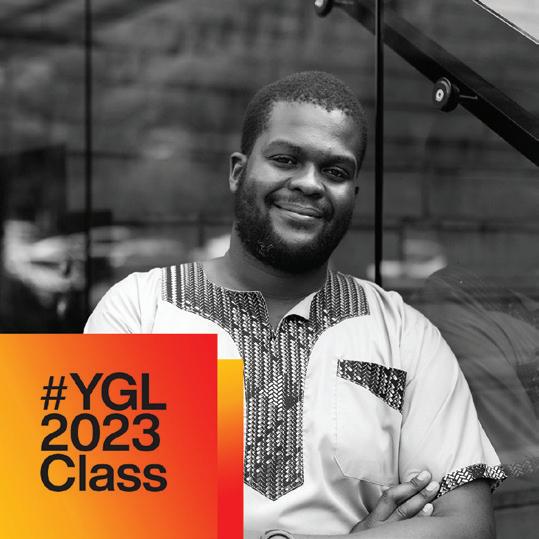
36 Wits Review April 2023
Image: Rajesh Jantilal
Dr Keneiloe Molopyane (PhD 2021) has been invited to join her second exclusive explorers club, the prestigious Explorers Club 50 (EC50), class of 2023. The EC50 is branded as a group of “50 people changing the world that the world needs to know about”. She is a palaeoanthropology researcher in and principal investigator of the Gladysvale Cave site. First selected as an Emerging Explorer for the National Geographic Society in 2021, Molopyane says her nomination to a second global explorers’ organisation is proof that she is “doing the right thing”.
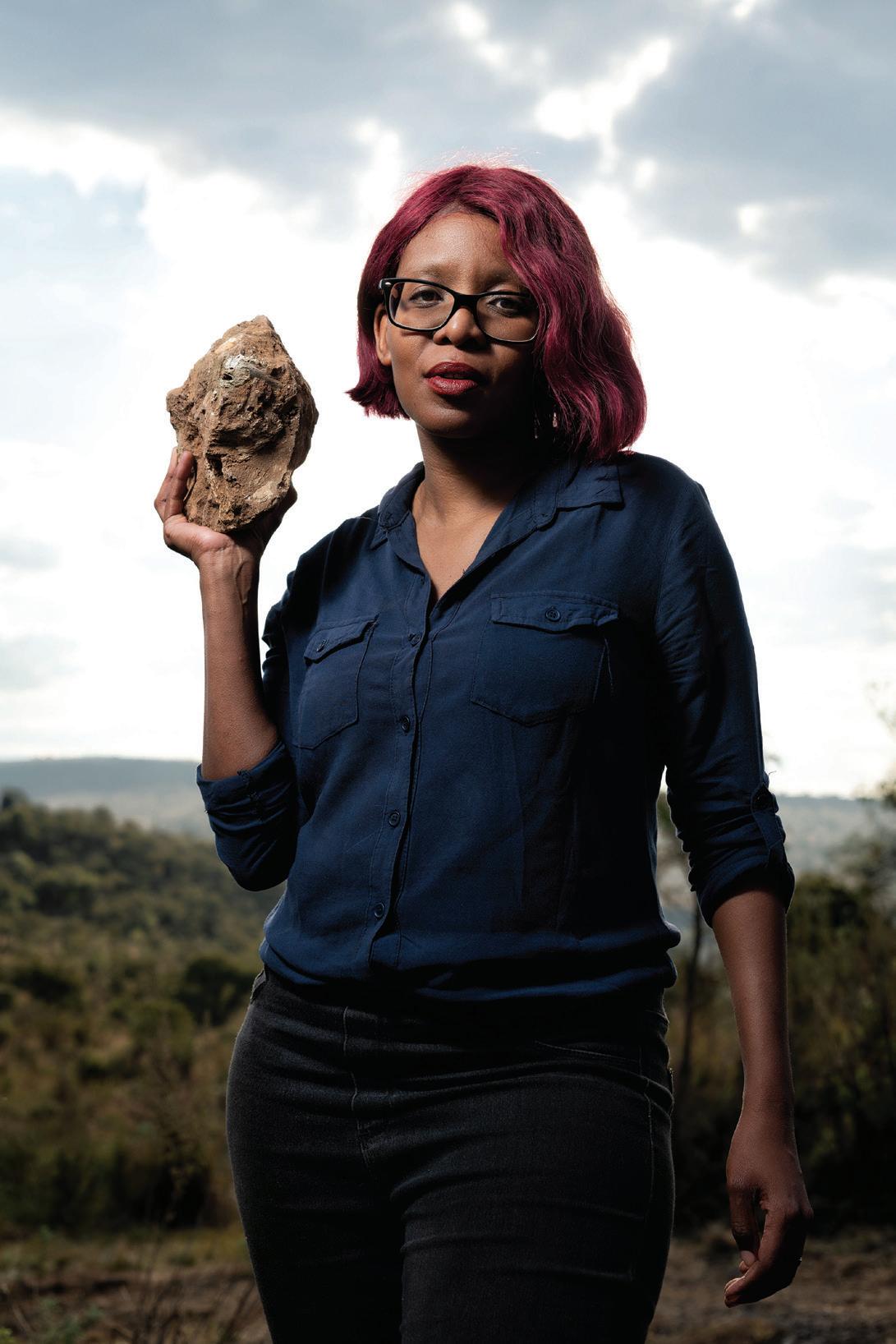 Image: Brett Eloff
Image: Brett Eloff
International Witsies A Year at Harvard Law School
Natalie Keetsi (LLB 2014), currently pursuing her master of laws degree at Harvard Law School, shares how she came to specialise in disputes, corporate criminal investigations related to major construction, infrastructure and energy projects.
My legal career started in 2010 as a first year LLB student at Wits. I graduated in 2014 with distinction and in the top 10 of my class. When featured in the 2013 edition of the legal publication Without Prejudice, as one of the top law students in South Africa, I said that I hoped to read for the LLM degree at an Ivy League law school in the United States. On reflection, I am amazed that I am now doing so at Harvard and as a Fellow of the Harvard South Africa Fellowship Program.
I fondly recall my time at Wits and the law library lawns, where I often prepared for classes and connected with classmates. Pursuing my first law degree was the foundation and springboard to the opportunities I have had academically and professionally because of the quality of the education the institution offers.
After graduating, I joined ENSAfrica, headquartered in Sandton, Johannesburg, as a candidate attorney. I was assigned to a team that specialised in disputes in the construction and energy sectors. I spent two years doing my articles and then received an offer as a junior lawyer in that team.

In 2017 I joined Pinsent Masons LLP, a multi-national law firm headquartered in London, as one of its founding lawyers to open its first office in Africa. I was passionate about training the junior lawyers and candidate attorneys. I exceeded my hourly and financial targets by exceptional margins and became the first attorney in the South African office to climb the global ranks of the firm, most recently being promoted to senior associate.
At Pinsent Masons, I was in the legal team that
38 Wits Review April 2023

led a high-profile corruption-related corporate criminal investigation. It secured the largest civil recovery in the history of the law enforcement authorities in South Africa. It was followed by a ground-breaking multi-billion rand global resolution involving the law enforcement authorities of the US, South Africa and other jurisdictions. Working on a case of this magnitude was career-defining, not only because of the outcome but also through working with and learning from the best legal minds in South Africa and the US.

Nearly 10 years after my last year as a Wits law student, I made the bold decision to pursue my dream of returning to the classroom to read for that master’s degree at Harvard Law School.

The application process was extensive and there was a long wait to hear the outcome. Receiving the positive news of my acceptance was an indescribable moment that I will always cherish.
When I arrived at Harvard, orientation kicked off with a busy yet enjoyable schedule followed by the start of the fall semester in mid-September 2022. The LLM class of 20222023 consists of 184 exceptional and dynamic candidates from 63 jurisdictions around the
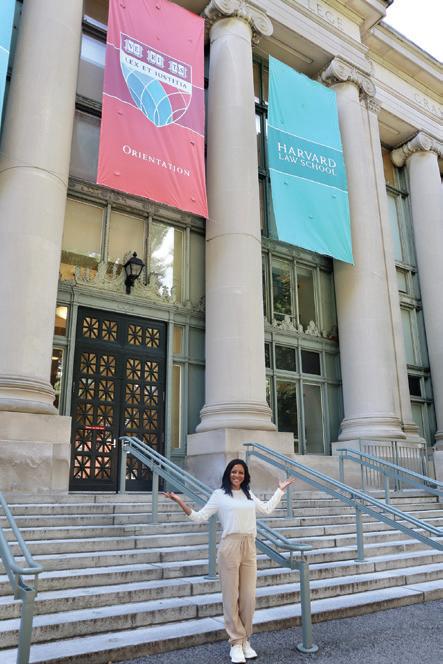
world. I am one of two South Africans in the class.
The academic experience is incredibly rigorous and intellectually stimulating, using a Socratic method of teaching. To learn from distinguished professors and leaders whose careers and work I have admired over the years has been enriching.
I spend a lot of my time at the Harvard Law Library. In my spare time, I enjoy immersing myself in the Bostonian culture, watching the Harvard football and ice hockey games against other schools as well as the Boston Celtics’ NBA basketball game with some class mates. I’ve enjoyed seeing how each holiday, such as Halloween and Christmas, is celebrated and the beauty in the transition of the seasons. I am thoroughly enjoying the winter and snow. I also have some favourite coffee and food spots close to campus: Bluestone Lane Café for coffee, breakfast and brunches and a vegan restaurant called Life Alive.
I’ve had the unwavering support of my mentors, close friends and most importantly my mother and sister. My mom instilled my faith and raised me to be driven, principled, hard-working and believing that, with God, all things are possible. My older sister, who lives in Manhattan and is a New York University graduate, inspired me to chase my dreams as she did hers.
I look forward to embracing every moment and opportunity. I hope that by sharing my professional and academic journey, it will inspire others. Dreams are attainable through exceptional and consistent hard work, even when it may seem impossible.
40 Wits Review April 2023 International Witsies
C M Y CM MY CY CMY K
Top left: Natalie in front of the Harvard Law School building Top right: Natalie is “thoroughly enjoying the winter and snow”
The Human Journey Tour
The first of its kind in the WONDERS OF PALAEOSCIENCES TOUR SERIES - THE HUMAN JOURNEY TOUR is a collaboration between GENUS and Safari Odyssey.
This tour supports the We Dig Fossils Grant
Bear witness to the story of humankind as we take you on a journey across South Africa, tracing the steps of our ancestors and the giant leaps they made to bring us to the present. Our Human Journey Tour is a once in a lifetime experience to walk in the footsteps of our past and discover stories left behind. This tour is not just about the past but an opportunity to propel the future.
Your participation in this life changing journey supports We Dig Fossils, a grant dedicated to diversity and inclusion in palaeosciences. Your contribution will go towards giving black women researchers a foundation to pursue their curiosity and take leadership in the field of palaeosciences. It will provide funds to grantees to develop and execute large research projects and achieve their greatest research ambitions while collaborating with one of Africa’s most inclusive palaeosciences communities, GENUS.
Visit www.wondersofpalaeosciences.safariodyssey.com/ to join The Human Journey Tour and take a peek into the tour itinerary and experiences. Alternatively contact Lynne Simpson at lynne@safariodyssey.com or call on +27 79 011 6763 l +27 72 371 6579.
Visit www.genus.africa/grants-programs/genus-seed-grant/ to learn more about the We Dig Fossil Grant and how GENUS supports palaeoscience research throughout Africa.
It starts here. It starts with you.

41
My Thirty-Year Adventure
By Heather Dugmore
“Emigration from South Africa was never on my mind,” says Dr Anthony Holley.
“After I completed my medical internship in January 1993 at what was then the Johannesburg General Hospital, my wife Birgit and I packed a suitcase each and flew to New Zealand for a year’s adventure. It could just as well as have been Canada because I had applied for short-term posts in both countries to give us an income during the year. I had already applied to a surgical programme at the Joburg Gen and had been accepted, so we were all set to return.”
Thirty years later, he is an eminent specialist in intensive care medicine at the Royal Brisbane and Women’s Hospital in Queensland, Australia, associate professor at the University of Queensland’s School of Medicine and a captain in the Royal Australian Navy.
New Zealand came up as their first destination when Anthony was offered a post at a 200bed hospital in Whanganui on the North Island. “Wits medical graduates have always been highly sought after and this beautiful place with vast volcanic beaches and mountains appealed to us.”

42 Wits Review April 2023
Above: Associate Professor Anthony Holley, bogged down in Tanzania
Dr Anthony Holley (MBBCh 1991) never intended to settle in Brisbane, but the pull of adventure and opportunity allowed him to seamlessly integrate into a life as an emergency and intensive care specialist and captain in the Royal Australian Navy.
Anthony and Birgit, née Deist, met at Rhodes University, where he first did a bachelor of science to get into medical school and she was studying computer science.
He always wanted to be a doctor, following in the footsteps of two family members, both Wits alumni: his mother’s brother Prof Cedric Bremner (MBBCh 1953, MMed 1968), who headed surgery at Wits and is now in his nineties and retired in Mooi River; and his cousin, Dr Ross Bremner (BSc 1984, MBBCh 1988, PhD 1998), a cardiothoracic surgeon in Arizona.
“I managed to get a place at Wits after being short-listed when a student gave up two weeks into second year,” Anthony explains. “The very first person I came across at medical school was the table doctor in dissection, Dr Jonathan Drummond-Webb (MBBCh 1982), whom I’d met in Angola during my compulsory national service, which I did straight after school. Jon was doing his military service as a doctor, and he went on to become a celebrated cardiothoracic surgeon at Arkansas Children’s Hospital in Little
8km away from my hospital in Brisbane at the Prince Charles Hospital. We’ve remained friends and hang out together.”
Anthony has also remained friends with his medical school flatmate, Dr Frank Weilert (BSc 1987, MBBCh 1991), a gastroenterologist with a special interest in hepatology who has been at Waikato Hospital in Hamilton for many years.
“While at Wits we stayed in a derelict old block of flats in Hillbrow, up Empire Road, filled with an odd bunch of people. But it was real handy to get to medical school from there,” he explains.
They did their grocery shopping in Hillbrow, but the wild late 1980s nightlife was not on the cards for Anthony, who spent all his time studying: “Most of my med school peers were super high achievers with five or six As from school or postgraduate firsts, whereas I don’t consider myself the brightest of fellows and I was just so delighted to have a place at medical school that I over-studied and overdid it for every exam. I ended up getting good results simply from studying so hard.” He was awarded the David Lurie Memorial Medal for Surgery in 1991.
“I have so many memories from Wits, including harrowing ones, such as being in the Alex Clinic with Frank in our sixth year when
Bottom left: Dr Holley with colleagues in Iraq Bottom right: With his wife Birgit at a Legacy gala dinner for the Defence Force. All proceeds go towards programmes that help the widow(er)s, children and families of veterans
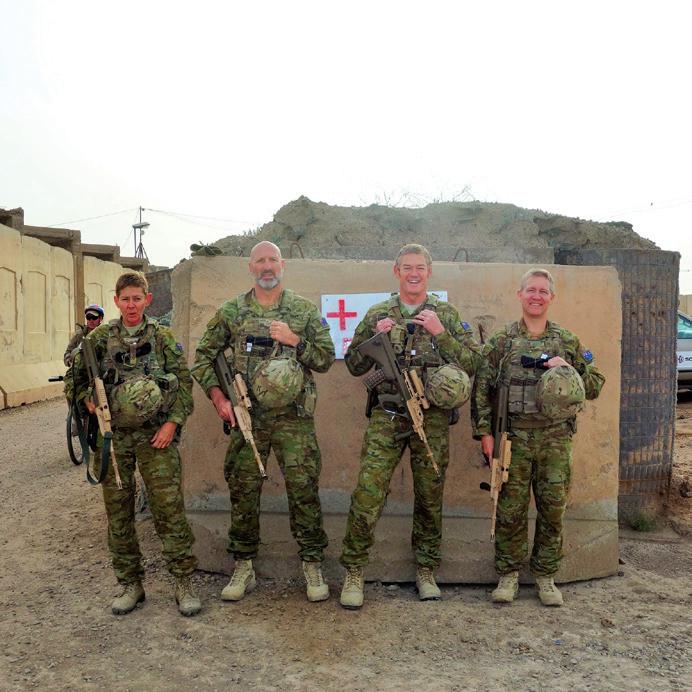
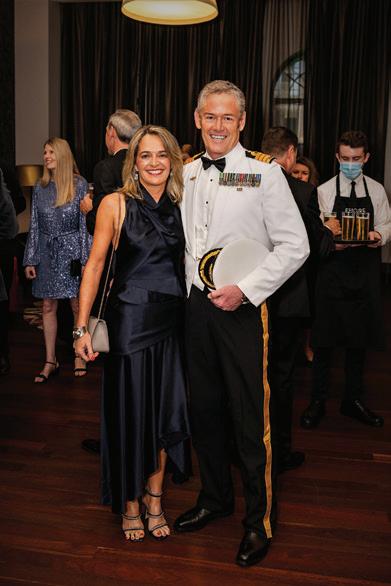
43 International Witsies
Image: ©Joseph Byford
International Witsies
violence broke out and it was just the two of us attending to huge numbers of seriously injured people.”
Instead of heading back to South Africa, Anthony was presented with an opportunity to specialise in emergency medicine through the Royal New Zealand Navy. “The professor of medicine at the University of Auckland, Commander Des Gorman, suggested I do my specialist exams while in the military and he painted a rosy picture about how this would lead to good jobs. So I did that, entering the six-year programme and at the same time doing a diploma in diving and hyperbaric medicine.”
Part way through Anthony’s emergency medicine specialist training, he was posted to war zones, including Bougainville and East Timor. He subsequently transferred to the Royal Australian Navy and completed tours in Iraq, Afghanistan and the Persian Gulf, each for several months at a time, in medical and peacekeeping roles. The navy provides service in war zones as well as in domestic operations such as border protection, assisting with bushfires and the national COVID-19 response.
“I did tours to Afghanistan in 2012 and 2013 and to Iraq in 2016, 2018 and 2019, each time for three to five months,” Anthony says. “We cared for severe casualties, including gunshot wounds and victims of explosions. Despite being in the navy, these tours were land-based at military
working in those environments have an edge as a result of the significant trauma they treat. “Working at the Joburg Gen equally prepared me well, as we often worked 36 hours at a stretch and very rarely got a weekend off. You work through the exhaustion; it builds your resilience. It also helps that I’m an adrenaline junkie.”

In the meantime, they had two sons and Birgit completed her master’s in education, transitioning from being a computer analyst to pursue her passion of teaching mathematics. Their elder son, Myles, is now a legal officer in the Royal Australian Navy, and Rob is a junior doctor in Brisbane. “I couldn’t be more blessed with both sons pursuing careers in areas of shared passion,” says Anthony.
By then, he had been “bitten by the intensive care bug” and wanted to look after patients for longer than the few hours that emergency medicine offered. Since the success rate for ICU training at the Royal Brisbane and Women’s Hospital (RBWH), Australia was excellent, he applied for a position and worked as a trainee specialist at RBWH under another Wits medical luminary, Professor Jeffrey Lipman (MBBCh 1972), who was the clinical director at the time.
Prior to moving to Australia in 1997 Jeffrey was head of ICU at Baragwanath Hospital in Soweto. He was formerly the director of intensive care services at RBWH, and professor and head of anaesthesiology and critical care at the University of Queensland, with adjunct professorial appointments at Queensland University of Technology, the University of Sydney and Wits University. Jeffrey has since retired.
establishments in the middle of the desert. We attended to a mix of patients: Americans, Australians, Czechs, Germans, Brits, Afghan or Iraqi soldiers and even insurgents. I developed huge resilience as there were only a small number of doctors working 24/7 for protracted periods.”
The military medical experience he gained opened up many opportunities, as there is recognition in the medical profession that people
“I love the man, he is so energetic and afforded me so many opportunities,” says Anthony, who has been a specialist in intensive care at RBWH for 20 years. Jeffrey is co-supervising Anthony’s doctorate, which is focused on establishing a critical care burns pilot registry designed to collect data from Australian and New Zealand patients who are severely burned.
As captain in the Royal Australian Navy, Anthony is the director of Navy Health Reserves, training health professionals doing part-time service.
With all this going on it’s hard to imagine he has any free time but he says “the working conditions at the hospital are incredibly civilised, with a 40-60 hour week, and getting to work is easy”. They live 6km from the hospital in an old
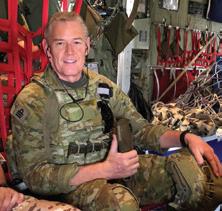
44 Wits Review April 2023
Above: Anthony serving in Iraq in medical and peacekeeping roles Below: Surfing in Hawaii
“I started to wonder whether we were a group of exceptional individuals, and then it dawned on me, we were a group of average individuals at an exceptional university”
Queenslander, built in the 1920s, that they’ve modified.
“We also have a house on the beach in Pottsville, North of Byron Bay, and we try to get there every other weekend that I’m not working to relax and to surf, which is another great passion in my life. Other weekends we go horse riding.

“We have a very social life in Brisbane and a solid network of friends. We’ve been really blessed along the way. For two people who never came here to settle, it has been so easy to transition to a life in Australia. It is a beautiful country and gives everyone who is prepared to work hard a fair go. You are very easily accepted and integrated into the culture, which is similar in many ways to South Africa, including beer
and barbecue.”
He and Birgit take an adventure trip every year. “We’ve crossed Tanzania in a jeep, traversed eastern Europe in a little camper van and ridden horses across the Carpathian mountains in Bulgaria. We’ve also been back to South Africa many times and done a good few trips to national parks in southern Africa. There is something about Africa that is irresistible and that has a beauty that cannot be replaced.”
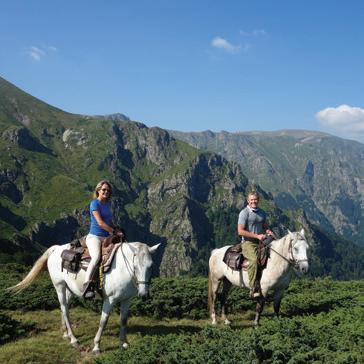
In May he will be in South Africa as a guest of Professor Rudo Mathivha, chief specialist in critical care medicine at Chris Hani Baragwanath Academic Hospital, for the “Ventilation through the Ages” conference.
For Wits’ centenary reunion in Brisbane last year, Anthony was invited to make some closing remarks. He said: “You get to this stage of your career and you look around at your colleagues from Wits and you see presidents of societies, directors of businesses, senior medical people and scientists who have contributed massively in their fields. I started to wonder whether we were a group of exceptional individuals, and then it dawned on me, we were a group of average individuals at an exceptional university. I am grateful every day of my life for the opportunity to have studied at Wits Medical School. The training was so effective that when I came to do my specialist exams, it set me up very well for an intensive care career.”

45 International Witsies
Top left: Anthony and Birgit in France. Top right: Birgit, Myles, Robert and Anthony in Japan Left: Anthony and Birgit riding in Bulgaria




 Above: Part of the Keiskamma Tapestry, 2003, featuring the Xhosa Wars that took place over 100 years
Above: Part of the Keiskamma Tapestry, 2003, featuring the Xhosa Wars that took place over 100 years
 By Ufrieda Ho
By Ufrieda Ho
Twenty years ago a Wits doctor and artist started to tell a story through thread, art and community in the Eastern Cape as a response to the AIDS epidemic at the time. Stich by beautiful stitch it evolved to become the renowned Keiskamma Art Project (KAP), offering a backdrop to a South African story.

It was in 2003 that Dr Carol Hofmeyr, née Baker (MBBCh 1973) joined her husband Dr Justus Hofmeyr (MBBCh 1973, DSc Med
2013) in relocating to the Eastern Cape. Until 2000, Justus was a professor of obstetrics and gynaecology at Wits University. He transferred to the Frere and Cecilia Makiwane hospitals to do research in the under-resourced communities. The couple bought a house in East London thinking it would be “a kind of holiday home” but they soon realised the dire need in the rural village of Hamburg and eventually set up home in there.
“It was my first experience of living in such an impoverished community and also seeing up close the devastation of HIV,” says Carol, who had at that stage not practised as a medical doctor for about 10 years. In a 2013 interview she said she was disillusioned with what she experienced: “Having studied medicine, I married my husband and had two children in quick succession. I practised medicine, first in Alexandra Clinic and then in Coronation Hospital (now Rahima Moosa Hospital). I remember those days as being terrible. I couldn’t cope with both the illness I saw and the system.” She chose to pursue English literature studies and completing a master’s in fine art from the University of Johannesburg.
In Hamburg, she decided to use art and embroidery as the conduit for community impact.

49
Above: Dr Carol Hofmeyr with artist Nomfusi Nkani in the early days of the Keiskamma Project Left: A detail from the Keiskamma Altarpiece, 2005. This piece makes use of the Bayeux stitch. The Bayeux Tapestry, which depicts the Norman Conquest of England in 1066, was a great influence. The tapestries function both as artwork and historical texts
The textile art pieces that have over two decades become the celebrated Keiskamma Art Project collection trace their origins story to a Wits doctor who made art and medicine count when it mattered most.
She established the KAP in 2003 with the hope that the project would help the grannies and widows who were left with broken hearts and loss of income after burying their adult children and husbands, many lost to HIV.
And so, the women gathered to embroider. Initially they worked on smaller projects such as cushion covers, wall hangings and bags for sale to tourists. Stitch by stitch they started to set down some hurt, to let their stories be woven into cloths with their individual imprint and also their efforts as a collective. The group’s name stems from the Keiskamma River, which flows into the Indian Ocean in an estuary below their studio in Hamburg.
Using her background in fine art, Carol wanted to design more ambitious projects, including the 120-metre long tapestry called the Keiskamma Tapestry. It comes together as a complex story of people and their histories.
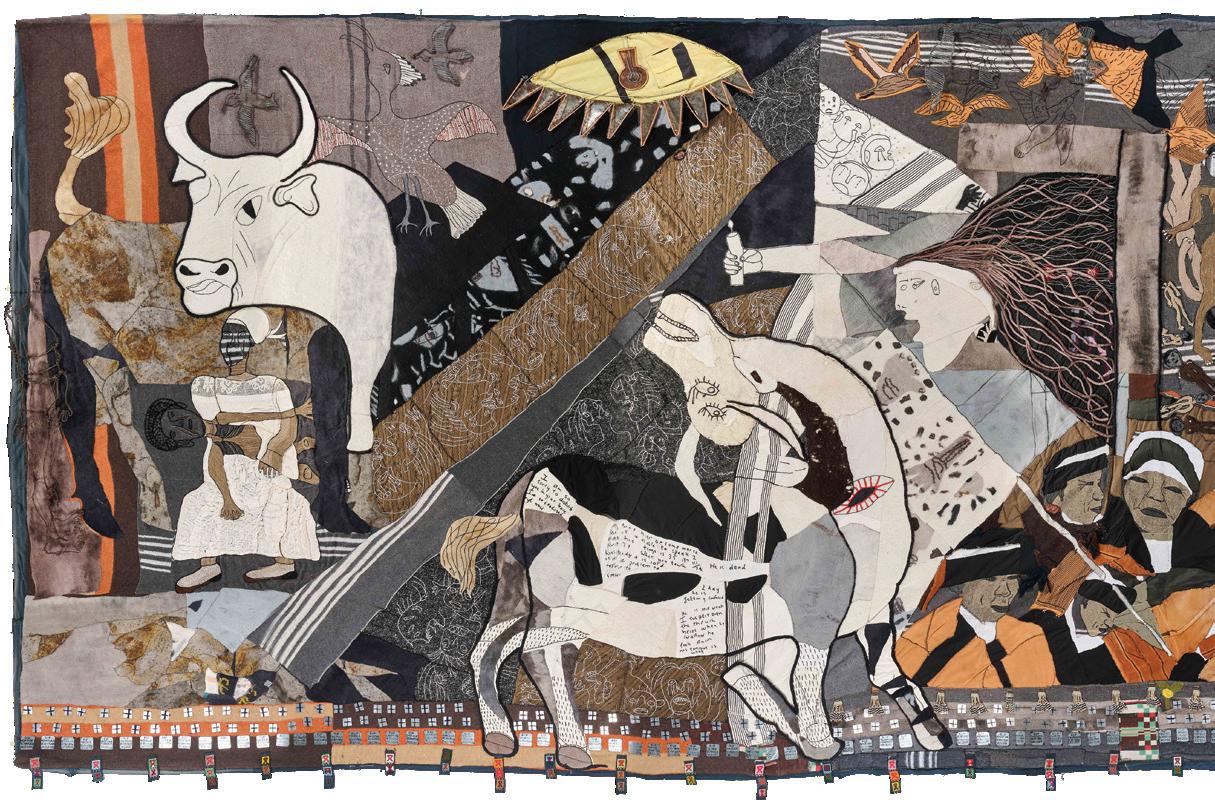
It features the Xhosa Wars that took place over the 100 years of 1779 and 1879, and reflects the deepening stranglehold of British colonialism and tensions and conflict with the Boers. With each metre, it takes another historical turn. It ends at the dawn of democracy in 1994.
The work stands as a powerful addition to the art treasures and heritage of the country. It also survived the January 2022 fire in the Houses of Parliament, where it is usually displayed.
“The communities of Keiskammahoek, in what used to be Ciskei, were made up of people who had settled there over time so they were different family groups, not as unified as communities from the old Transkei. So, the art project gave the women from the villages somewhere to go in the day; they could take their children there if they wanted to, and they were able to talk to other women and share their problems. They formed support groups as they
Above: Detail of the Keiskamma Guernica, 2010 Right: The project gives women from the villages around Hamburg somewhere to go during the day and provides a support network while they work
50 Wits Review April 2023
And so, the women gathered to embroider....Stitch by stitch they started to set down some hurt, to let their stories be woven into cloths with their individual imprint and their efforts as a collective.

sat alongside each other all day long talking and embroidering,” says Carol.
The group incorporated expertise from further afield, including Jan Chalmers and Jacky Jesewsky from Oxford, who taught the group Bayeux embroidery and other skills. They also received assistance from numerous volunteers and visual artists. Carol worked on more ambitious designs over the years as ways to set down histories and hurt through the eyes of women in this small town. She did this while she simultaneously picked up her stethoscope again, as a doctor in a rural community that needed more hands on deck.
Today about 150 women are employed through KAP. They have become accomplished art makers and master embroiderers and have become world renowned as a collective. Carol’s artistic hand in the pieces has been deservedly feted.
Among the standout pieces is the Keiskamma Guernica, made in 2010. It is a reimagining of Picasso’s 1937 anti-war masterpiece. In the South African piece, the embroiderers tell of a war against the disease of HIV. The depiction of loss and grief and the burden of bearing witness to HIV deaths is breathtakingly intimate and humbling.
In 2022 the women of KAP created their Resilience tapestry. The work speaks of the impact of COVID-19, of lockdowns, death and fear. Then it turns to recovery, resilience and hope.
For the first time all the major works created
tapestry (2004), were curated for an exhibition called Umaf’evuka nje ngenyanga: Dying and rising as the moon does and opened at Constitution Hill in Johannesburg on South Africa’s Heritage Day on 24 September 2022.

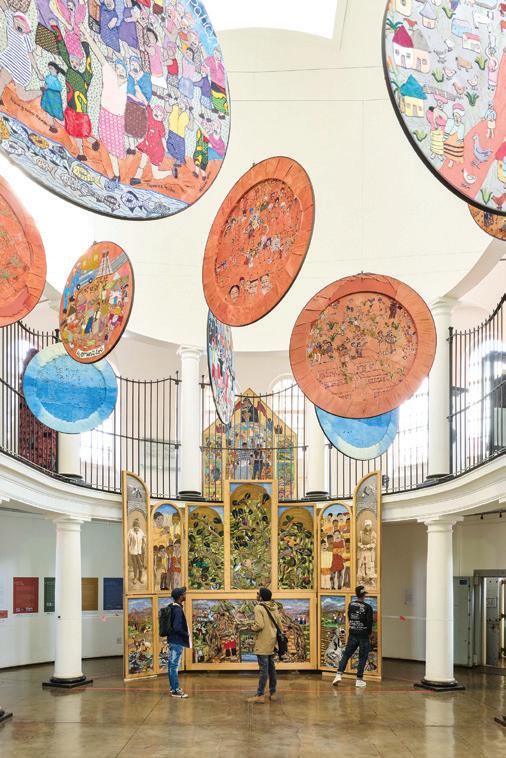
The exhibition was conceived, curated and co-organised by visual artists Pippa Hetherington, Cathy Stanley and researcher Sandra Dobson in collaboration with founder and director of the African Artists’ Foundation Azu Nwagbogu. It enjoyed a triumphant sixmonth showing at the Women’s Jail and Number 4 at Constitution Hill and there are plans for an international tour. The exhibition honours a 20-
Above & opposite page below: The exhibition called Umaf’evuka nje
ngenyanga: Dying and rising as the moon does at Constitution Hill Below: Detail of the Democracy Tapestry, 2004
Feature
Explore 3D virtual tour of Dying and rising as the moon does
memorial, activism and reframing narratives.
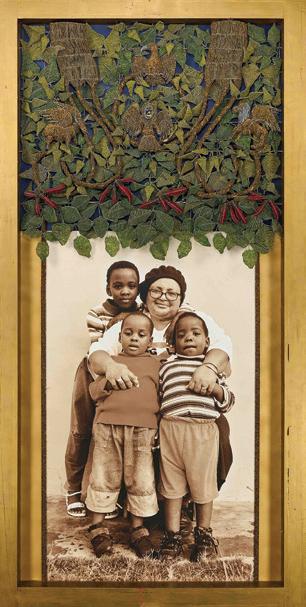
Nwagbogu, in his address at the opening of the exhibition, said the opportunity to view, under one roof, 15 of the 17 major tapestries created by KAP over the past 20 years was a rare experience. Also that the venue for the exhibition, Constitution Hill, was deeply symbolic of the struggle of the women of Keiskamma.
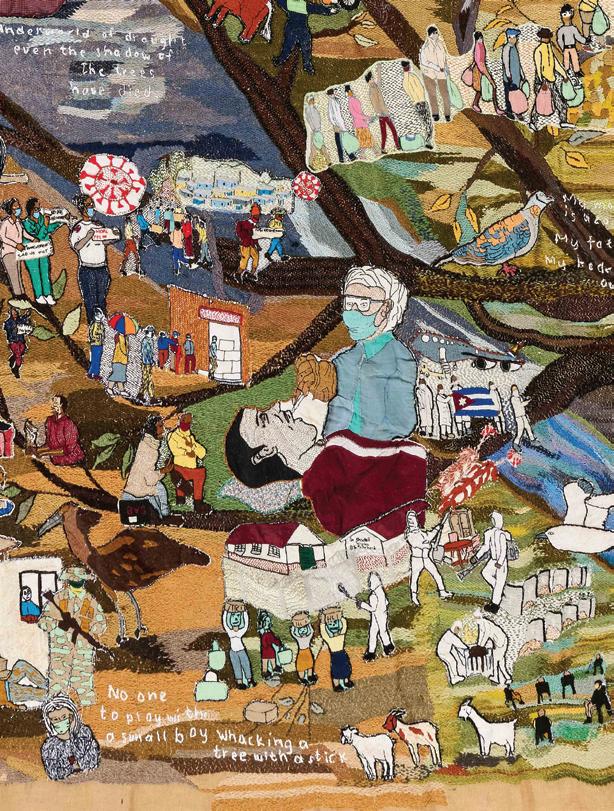

“It is hugely meaningful to see this project realised in an exhibition at Constitution Hill, a living museum that tells stories of the country’s complex, painful past and the enormous sacrifices of people of colour and their fight for equality before the law and their collective hopes for the future.”
For Carol, the choice of Constitution Hill as location was not an easy one. The ghosts from South Africa’s dark past don’t rest easy there, she says. And museum spaces can inadvertently blunt the horror of the past and gloss over still-present dire realities.
She grappled with this initially but settled in the conclusion that there can be room for both things: celebration of milestones for KAP while not losing sight of what still needs to be done in communities like Hamburg.
“We cannot be deceived that just because there is an exhibition at Constitution Hill or because over the past few years there’s been international attention and corporate interest it means Keiskamma has arrived. The truth is the village remains desperately poor; health services
are bad and schools are bad. I know the women who have been involved in KAP will say their lives have improved and I know that that is true, but I know that they still struggle,” she says.
Carol was awarded an honorary doctorate from Rhodes University in 2013. She, since 2019, has stepped away from direct involvement in the art project, which is now being headed by Michaela Howse. But KAP holds her heart and so much of her story too, which means there will always be enough thread to keep weaving her in.
Top left: Detail of A New Earth, 2018 Middle: Detail of the Keiskamma Altarpiece, 2005 Right: Detail of the Covid Resilience Tapestry, 2021

53
“Museum spaces can inadvertently blunt the horror of the past and gloss over still-present dire realities.”
Colour images: Anthea Pokroy/ Keiskamma Trust, Black and white images: Pippa Hetherington/Keiskamma Trust
Opposite: Illustration of Denis as a toddler with his father, Baruch Hirson
In a different light
Dressed in a blue cotton shirt and dark chinos, with a linen jacket and leather attaché case slung over his shoulder, Denis seems pleased to see Joburg as I drive him to the Wits Campus. He observes my nervous chatter with measured one-word answers, “good” and “perfect”, as we bundle into the car.
By Jacqueline Steeneveldt
Based in Paris since 1975, the 71-year-old author and poet has frequently migrated: from Cambridge to Johannesburg, London and Jerusalem; from writing in English to writing in French and translating Afrikaans; from acting to teaching; from writing literary scholarship to editing and writing poetry, novels as well as memoir.
Denis Hirson’s first words to me are in playful chastisement: “You’re early!”
He’s visiting Johannesburg from France and is staying in Houghton at the home of old friends and fellow Witsies William Kentridge (BA 1977, DLitt honoris causa 2004) and Dr Anne Stanwix (MBBCh 1979) to promote his latest memoir My ThirtyMinute Bar Mitzvah (Jacana, 2022). William and Denis’s friendship stretches back to the 1980s and in 2018 they collaborated on a book, Footnotes for the Panther: Conversations between William Kentridge and Denis Hirson (Fourthwall Books, 2018).
Born in Cambridge to former Wits physics lecturer and social historian Baruch Hirson and paediatrician Dr Yael Hirson, née Sherman, (BSc 1948, BSc Hons 1949, MBBCh 1958), he is, like the title of one of his poems, “the long-distance South African”. He followed his parents into exile after his father’s release from a nineyear sentence as a political prisoner in 1973 in South Africa. Baruch’s political affiliation was to the African Resistance Movement. In response to the Sharpeville massacre in 1969, the group gravitated towards sabotage tactics, which resulted in its members being jailed.
Most of Denis’s journeys back to South Africa haven’t occurred physically but required deep excavations of memory instead.
His story of his childhood, being raised by
54 Wits Review April 2023 Profile
Known for his recollections of growing up in apartheid South Africa, author and poet Denis Hirson (BA 1972, BA Hons 1973) shares the multiple ways of looking at the past.

Above: Yael Hirson in 1955. She is 93 and lives in London

Below: Denis is the eldest of three children, by seven and a half years. Here he is with his siblings Zoë (left) and Allen in 1966
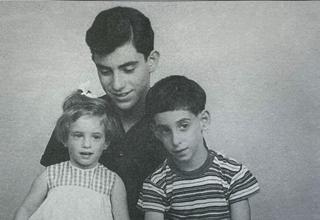
his mother with two younger siblings, and the consequences of his father’s long absence, was lyrically captured in The House Next Door to Africa (David Philip, 1986). This was followed by two commercially successful long-form prose poems I Remember King Kong (the boxer) (Jacana, 2004) and We Walk Straight So You Better Get Out the Way (Jacana, 2007). The zigzagging anecdotes and vignettes cover a range of subjects, at different times and perspectives, to “reveal what is being remembered from several angles at once”.
These two books resonated well with South Africans who grew up during the 1960s and 1970s as they are filled with the magic of everyday things such as Chappies bubble-gum, Cobra floor polish, drive-in cinemas and enamel mugs. Each series of recall begins with the phrase “I remember…”
For example: “I remember Maynard’s soft wine-gums, little wine-gums the size of a pencil rubber, tubes of hard goose-pimpled gums, and marshmallow fish that you clamped between your teeth till they stretched apart. AND
“I remember that, as far as I was concerned, the original King Kong was about a champion township boxer who killed the woman he loved and later committed suicide by drowning himself in a dam at Diepkloof Prison. The film, about an ape who kidnapped a beautiful woman, must have stolen its name from the play.”
Now, sitting in the passenger seat, Denis seems to be taking mental photographs of every detail of our route and confronting what he recalls with what is presented. “There are no white people walking in the streets,” he says quietly.
“It’s curious that everyone waits their turn so patiently. I would’ve thought it would’ve been more chaotic,” he says about motorists at a busy intersection where the traffic lights aren’t working because of recurring power outages.
Once at the Wits Club, he asks for orienting markers such as the Planetarium, Yale Road and the Great Hall. Denis majored in social anthropology after “being mesmerised by Satyajit Ray’s black and white film The World of Apu.” The film was shown during an Open Day in 1967 by renowned music ethnomusicologist Professor John Blacking (PhD 1965, DLitt 1972).
“I had few friends in high school [Parktown Boys High]. At Wits, I was exposed instantly to people I could find a deep connection with,” he
says. These included celebrated poets such as Ingrid de Kok (BA 1973), Robert Berold (BSc Eng 1969) and Chris Mann (BA 1971).
We decide on an impromptu walk around. It’s the last week of February and the first semester is in full swing. We meander up Alumni Lane, towards the Tower of Light, past the Chamber of Mines building, over the M2 Highway en route to the Great Hall. I notice his clean-shaven jaw has a few cuts from his morning shave. He has perfect posture and exudes a soft playful openness.
“This is where it was all at,” he remembers as we reach East Campus. His favourite spot was “the library lawns to the left of the swimming pool.”
He remembers … “there was a lending library of prefab here … a collection of trees over there,” he says pointing to the John Moffat building, “notably a chestnut tree.”
He remembers … “there was no path here” … “what’s that around the swimming pool? A fence? You can’t just go for a swim? Why isn’t anyone swimming?” he asks incredulously.
These memories stand in stark contrast to the incident he recalls, as a first-year student and member of the Human Rights Society, of a “REMEMBER SHARPEVILLE” banner being violently torn down and trampled on “as if it were a live snake” by fellow students.
Denis’s Wits degrees were followed by a doctorate in creative writing at the University of East Anglia in Norwich, despite the fact that “I was not interested in further academic studies”. From the process White Scars: On Reading and Rites of Passage (Jacana, 2006) emerged, which was runner-up for the 2007 Sunday Times Alan Paton Award.
His move to France he describes as fortuitous: “Everything about Paris was lucky for me. From the unique apartment to the unconventional school we were able to send our kids to. It is an easy commute to the centre of Paris and we have access to the nearby woods,” he says.
He lives with his wife, Adine Sagalyn, a photographer, in Saint-Mandé, Paris’s 12th arrondissement. It’s fitting that its motto is Cresco et Floresco, meaning “I grow and I flourish”. They have two children, Anna and Jeremy, to whom My Thirty-Minute Bar Mitzvah is dedicated.
In it, Denis returns to a singular memory
56 Wits Review April 2023 Profile
that burdened him for much of his childhood and adult life. He isolates and magnifies it in the form of a detective novel. The reader is asked to decipher and fill in events around his “bar mitzvah”. Clues come in the form of negations, silences, gaps and secrets about his immediate and ancestral family. There is a clear narrative structure: the first half is from the perspective of the child, but with the knowledge of the adult, and the second moves towards his adult experience.



I ask Denis if this memoir could be seen as drawing on all his previous work to finally coherently tell this particular story.
He seems startled and there’s a pause, followed by an audible gulp. He says the style and method were “arrived at thanks to a painstaking process over six discontinuous years of work”.
“I tried every method: first person, third person, fiction and poetry. I took great care over with whom I chose to share the work in progress,” he says. “One can get muddled if there are too many influences.” It was a bumpy road. At one point, one of his critics asked: what is this book about? “That question was quite a challenge,” he says. Later, his friend Robert Berold suggested he take out several pages of the manuscript.
This work is hopeful and comes as an epiphany thanks to the perspective of his daughter’s bat mitzvah experience. “Time passes, and for some reason, at an unforeseen moment, the spirit bends in an unexpected direction. New people appear on the horizon, the horizon itself changes shape. With any luck, perhaps even with the lever of love, some stone blocking the view is removed from one’s inner landscape and the past appears in a different light,” he writes in the memoir.
The book reveals the deep impact many children feel whose parents were involved in the underground struggle against apartheid.
I ask how he feels about contemporary South Africa and he pauses again, and breathes deeply: “I don’t want to comment on the situation. I’m here, only bearing witness to the despair and disappointment of what’s happening – the sedimented erosion and corruption.”
We take a different route back to the Kentridges via the M2 highway and he continues to read the posters out loud along the way: “We are the solution…”
57 Profile
Above: Baruch Hirson in 1977. He was a lecturer in the Wits Physics Department prior to his imprisonment, but became a respected historian on the South African labour movement after his release. He died in 1999 Below: Baruch at Reading University in 1963
Images from: Revolutions in My Life by Baruch Hirson (WUP 1995)
Denis Hirson’s latest memoir My ThirtyMinute Bar Mitzvah
Books

BOOKS
Winnie and Nelson: Portrait of a Marriage
by Jonny Steinberg
Penguin Random House, 2023
Professor Jonny Steinberg is one of South Africa’s foremost non-fiction writers

Image: Veronique Susman
Professor Jonny Steinberg (BA 1992, BA Hons 1993, MA 1996) is one of South Africa’s foremost non-fiction writers. He was the winner of the 2020 Recht Malan Prize for One Day in Bethlehem (Jonathan Ball, 2019), twice winner of the Sunday Times Alan Paton Award for Midlands (Jonathan Ball, 2002) and The Number (Jonathan Ball, 2004) and the inaugural winner of the Windham–Campbell Prize in Literature, first awarded by Yale University in 2013. In his forthcoming book (released in South Africa in May 2023) he examines the marriage of Nelson Mandela (LLD honoris causa 1991) and Winnie Madikizela-Mandela (BA 2005).
Winnie and Nelson: A Portrait of a Marriage recreates the political and private lives of the iconic anti-apartheid activists’ whirlwind romance from its origins in Johannesburg during the 1950s till their separation two years after Nelson’s release from prison in 1990 and their eventual divorce in 1996.


“It’s quite different to anything I’ve written before,” he says in a 2019 interview at Yale University, where he currently teaches in the Department of Political Science. “I’ve usually written about ordinary, anonymous people and tried to tell big stories through ordinary lives. In a way, this is the opposite. This is to try to show how the small textures in life emerge from big people. It’s an inverse of what I’ve done before.”
The Mandelas had an unconventional marriage which spanned three decades, yet they were only together for three years before Nelson
was imprisoned. Their contact was limited to brief supervised visits in the constant presence of prison warders. They were permitted to write each other short letters. Soon their three years “receded into memory and history”. Steinberg offers a fresh perspective, drawing on extensive correspondence during the 27 years Nelson was imprisoned, troves of archival material as well interviews with those who knew the couple. He tries to decipher the “code” they used to communicate.
He suggests that because of their unique positions in the context of South Africa’s history, “the idea of a marriage itself became a spectacle, a political spectacle”. On the one hand Nelson grew ever more in love with an idealised version of his wife, courting her in his letters but losing touch with events on the ground. While Winnie raised their two daughters alone, enduring imprisonment and torture. She largely kept his memory alive nostalgically: Winnie writes in her memoir Part of My Soul Went With Him (Norton, 1985): “I had so little time to love him. And that love has survived all these years of separation … perhaps if I’d had time to know him better, I might have found a lot of faults, but I only had time to love him and long for him all the time.”
In this dual biography, Steinberg shows how Winnie and Nelson’s political values eventually shift over time and how definitively they address the question South Africans still face: what do we do with the past?
59 Books
Left: Nelson Mandela and Winnie MadikizelaMandela had an unconventional marriage that spanned three decades Gallo/Getty Images
Understanding Ethiopia’s Tigray War
 by Martin Plaut and Sarah Vaughan
C Hurst & Co Publishers Ltd, 2023
by Martin Plaut and Sarah Vaughan
C Hurst & Co Publishers Ltd, 2023
The BBC’s former Africa editor, Martin Plaut (BA Hons 1977), has published extensively on African affairs for nearly three decades and is a senior researcher at the Institute of Commonwealth Studies. In his latest book Understanding Ethiopia’s Tigray War, he collaborates with academic Dr Sarah Vaughan, who too has written about the Horn of Africa since the late 1980s.
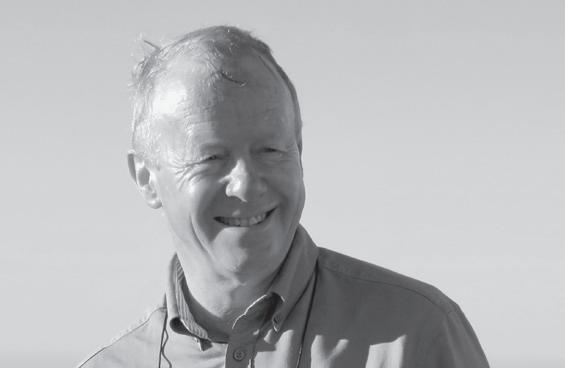
Plaut says the signs of the war “had been coming for months”. This book provides context to the factors that led to the conflict that erupted in November 2020 and describes the immense suffering it caused. “I believed the story needed recording – especially as the fighting was accompanied by the worst atrocities I had ever encountered,” he writes.
“The Tigray region of northern Ethiopia was invaded by the combined military might of Ethiopia and Eritrea, supported by troops from Somalia and Ethiopian ethnic militia. In the ensuing battles at least 600 000 civilians were killed and probably more than 200 000 troops died. We cannot be sure – no independent journalists are permitted in the region,” he tells WITSReview
Plaut writes that Eritrean and Ethiopian leaders made unprecedented visits to each other’s military bases prior to the conflict. Increasingly aggressive rhetoric accompanied the deployment of troops and arms to the frontlines. Tigrayan officers and troops were purged from the Ethiopian military. Tigrayans also lost their jobs and by 4 November 2020, the fighting was under way.
Within a month the Tigrayans were driven from their regional capital, Mekelle. The Tigrayans withdrew to the mountains from where they launched increasingly effective guerrilla campaigns – finally driving their adversaries from the region. By November 2022 they were advancing southwards, threatening the Ethiopian capital and finally a peace agreement was signed in Pretoria.
“The severity of the situation gave it added urgency and we had to work at speed,” Plaut says.
The book has been praised for being “timely, forceful and essential” as well as probing the question of whether war is the only way “to arbitrate between a unitary and federalist version of a nation”.
See more of Plaut’s other publications here. https://issuu. com/witsalumnirelations/docs/ wits_review__april_2021_issuu/74
60 Wits Review April 2023 Books
Martin Plaut, the BBC’s former Africa editor
How To Steal A Gold Mine: The Aurora Story
 by Dianne Hawker
by Dianne Hawker
Tafelberg, 2023
Dianne Hawker (BA 2018, BA Hons 2022) has worked as a journalist for more than 18 years at various media organisations and is currently a freelance journalist for TRT World, a Turkishbased television news company. She is a media trainer and coaches multimedia journalists through her company, iNtatheli Media. For over a decade she researched the “Aurora story” through interviews, union representations and records that finally resulted in her first book How to Steal A Gold Mine. “It was something I couldn’t let go of,” she says in a radio interview. It was made possible through the Henry Nxumalo Fund, in partnership with the Wits Centre for Journalism, which enables journalists seeking pre-publication support for reporting of public interest.
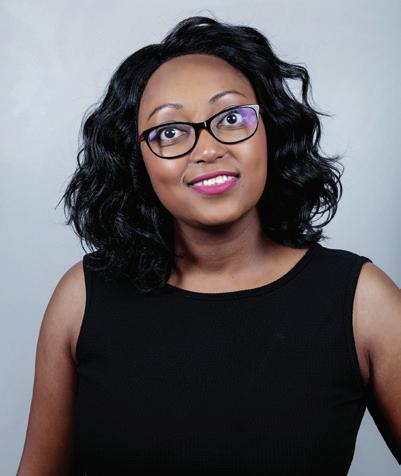
In October 2009, Aurora Empowerment Systems, a black-owned business, made a bid to rescue liquidated Pamodzi Gold mines on the East Rand. The directors of Aurora included former President Jacob Zuma's nephew, Khulubuse Zuma, his lawyer Michael Hulley and former president Nelson Mandela’s grandson Zondwa Mandela. The company promised to turn the mine into a new business that would offer stellar benefits to workers to the tune of R650 million.
“It sounded too good to be true,” says Hawker. Her book documents how the Auroramanaged mines which were steadily stripped of assets and illicit payments were made to the “connected families”. Hawker says she was struck by the state of despair: more than 5 000 workers and suppliers, who depended on their employment to keep themselves and their families alive, went unpaid. Sadly, despite the litany of evidence, none of the perpetrators have been held accountable.
She dedicates the book to her grandmother Ruth Elizabeth Hawker. “She taught me to be a difficult woman, in the best kind of way.”
Dianne Hawker has worked as a journalist for more than 18 years and is currently a freelance journalist for TRT World, a Turkish-based television news company
61 Books
More than 5 000 workers and suppliers, who depended on their employment to keep themselves and their families alive, went unpaid. Sadly, despite the litany of evidence, none of the perpetrators have been held accountable.
My Year of Not Getting Sh*tfaced
by Pamela Power
Jonathan Ball, 2023
For the bird “nuts”
Pamela Power (MA 2006) is a Johannesburg-based script editor who has a dedicated following of readers, from her blog as well as posts on social media. She admits to being a workaholic and has worked on scripts for well-known South African television shows such as Top Billing, Generations, Rockville, Uzalo and Muvhango She completed her undergraduate degrees at the University of KwaZulu-Natal. The first two chapters of her debut novel Ms Conception arose from her master’s at Wits in 2006. Ms Conception was published digitally by eKhaya in 2012 and was released in hard copy by Penguin Random House South Africa in 2015. She’s also written a suspense thriller Things Unseen (Clockwork Books, 2016) and Delilah Now Trending (Penguin Random House, 2017). The novel Chasing Marian (Pan MacMillan, 2022) was a fun project that started as blog posts along with three die-hard Marian Keyes friends Amy Heydenrych, Qarnita Loxton and Gail Schimmel.
As the title indicates, her latest book is a humorous look at her complicated relationship with alcohol. The self-analysis was sparked after a riotous Mother’s Day when she’d “picked a fight with a stranger” and “collided with the floor”. It is set against a backdrop of the COVID-19 pandemic, electricity outages, financial worries and uncertainty about South Africa’s future. The book is a relatable and laugh-out-loud look – much like a Bridget Jones from the suburbs – at how to ease social situations with a moderate amount of alcohol.


She says “I’m more careful with my life and gentle with myself.”
By popular demand, the impressive guide Roberts Nests and Eggs of Southern African Birds (Jacana 2023) is available again. This definitive field guide, first published in 2011, has been republished and updated. It covers the nesting habits of the 730 bird species known to breed in southern Africa with an extensive range of colour photographs illustrating the nests and birds. The author Dr Warwick Tarboton (MSc 1979, PhD 1991) admits to having been a bird nut since the age of 11. He matriculated from St Stithians College in Johannesburg and began his working life as a geologist, but has followed his passion in ornithology for the past 22 years. His doctorate tried to unravel the “complicated and bizarre mating system of the African Jacana”.

62 Wits Review April 2023 Books
Pamela Power is a Johannesburg-based script editor
The Institute for Creative Dying
 by Jarred Thompson
by Jarred Thompson
Jarred Thompson (MA 2022) is a literary and cultural studies researcher in the English Department at the University of Pretoria and in the doctoral programme. He has been the recipient of several prestigious scholarships, including the Global Excellence and Stature Scholarship, the Chris van Wyk Creative Writing Scholarship, two National Arts Council Grants and an NRF nGAP Scholarship. In 2020 he won the Afritondo Short Story Prize for the story Good Help is Hard to Find.
Thompson grew up in Johannesburg and majored in English at Alabama State University, completing his degree summa cum laude in 2016. He was “a stand-out member of the tennis team” during his time there. He says the rich experiences of being away from South Africa added to his writing. “Being away from a familiar world view I had the space to explore other world views,” he says.
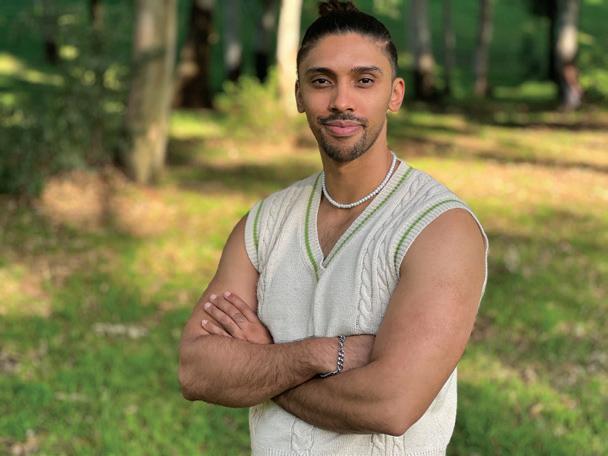
The Institute for Creative Dying is Thompson’s debut novel in which five characters – a model, a former nun, a couple in crisis, and an offender newly released from prison – explore “what if
we were offered alternative ways to die?” In turn he draws attention to how we live. “The skin cell that’s died and flaked off my body somehow lands up as a fleck of dust on a stranger’s doorstep. How astonishing, then, that so much of ourselves gets shed, and is lost, from the moment we’re born to the day we give up our place in the waking world,” he explains.
The novel has been praised for being “thought-provoking” and “an astonishing, unique piece of work.” It is a direct result of his master’s in creative writing at Wits.
“The lecturers who helped shaped my work were Prof Bronwyn Law-Viljoen (PhD 2017), Philippa Yaa De Villiers (BA Hons 1999), Prof Ivan Vladislavic (BA 1978, BA Hons 1979) and Dr Michelle Adler (BA Hons 1983, PDip 1986, MA 1989).
“My master’s started during the COVID-19 pandemic and most of the course was online but I was able to engage with my lecturers and fellow writers and draw value from the experience,” he says.
63 Books
Picador, 2023
Jarred Thompson is a literary and cultural studies researcher in the English Department at the University of Pretoria
Image: Thango Ntwasa
REGINA TWALA
invisible?
64 Wits Review April 2023 Feature
How does a remarkable life come to be And how does it come to light again? Ufrieda Ho tells the story of how a historian rediscovered the work of Regina Gelana Twala (BA 1948), the second black woman to graduate from Wits University. Historical Feature
she had been deliberately silenced, written out of the historical record and intentionally erased
she was supposed to be the shadow woman, not the leader, a pliant mentee
she was bold, smart, strong, sassy and opinionated
her successes and achievements were framed against a time when a black woman had to “know her place”
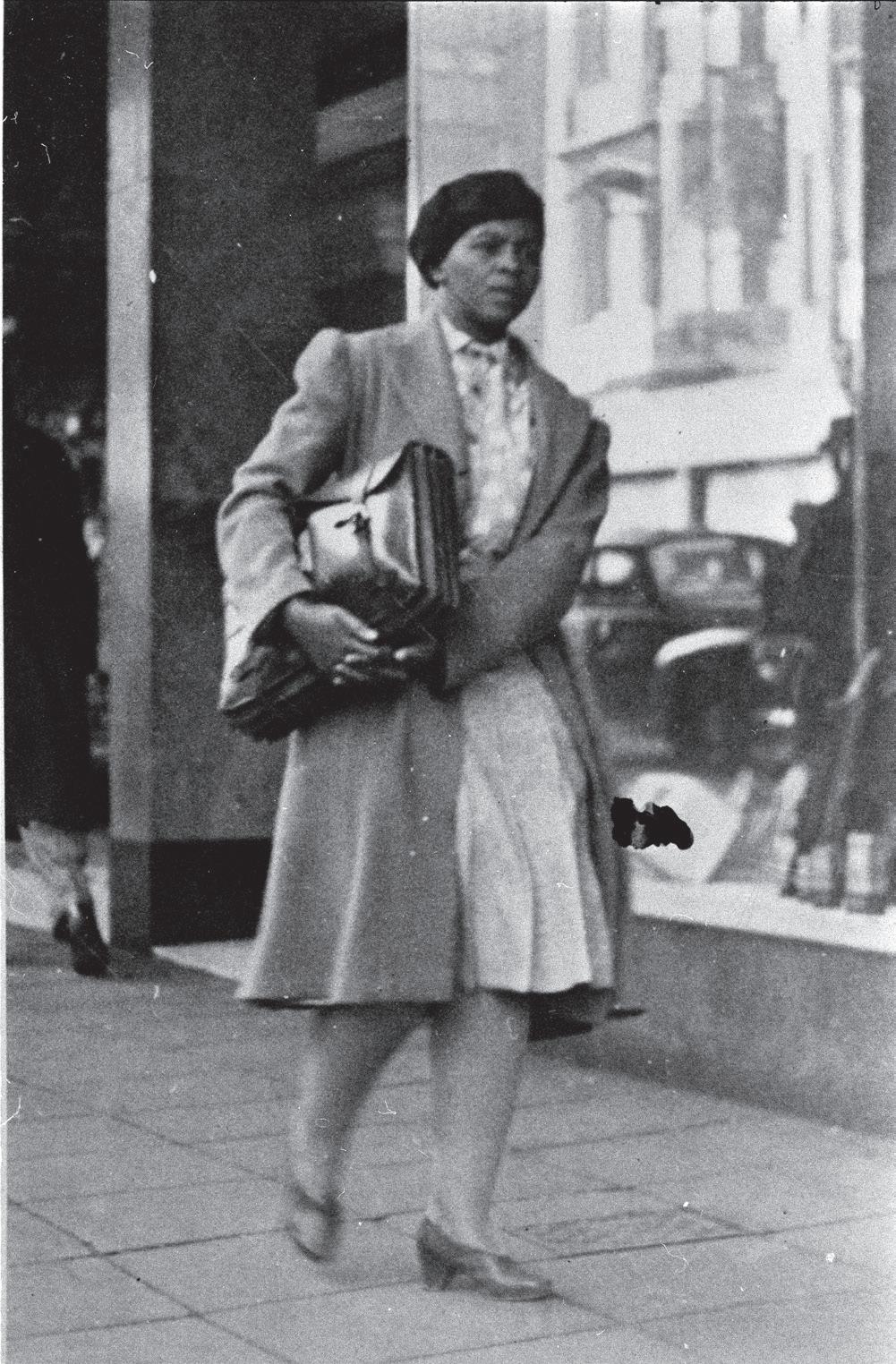
Historian Joel Cabrita never set out to “find” Regina Twala. But the history professor at Stanford University in the US couldn’t “unsee” Twala’s story either. Twala, who died in 1968, seemed to be erased from records but she had made significant anthropological contributions and was only the second black woman to graduate from Wits.

The journey that connects these two women across time and across worlds has intertwined as Cabrita’s new book Written Out – The Silencing of Regina Gelana Twala (Ohio University Press, 2023).
This is the telling of one woman’s remarkable life, also of how and why a life story comes to be rendered invisible.
This story begins in 2013. Cabrita was researching the Zion Christian Church in southern Africa. Her work took her to Sweden, to the archives of the late Bengt Sundkler. He was a historian whose area of academic interest was religion in Eswatini (then called Swaziland) in the 1950s.
“There was loads of interesting material in his archive,” says Cabrita, “but as I was looking through his research notes there were these letters and notes written to him by someone who signed themselves off as RD Twala – nothing more. There were pages and pages of these notes and clearly the person was anthropologically trained and knew a lot about the topic.”
Returning to the small kingdom of Eswatini, where her family is from, Cabrita asked everyone she could about the mysterious RD Twala. Not a single person had heard of this person. Cabrita says this was surprising, because Twala’s research contribution was impactful and this person would surely have been known by the small research community in the country. All the blanks and dead-ends made her want to find out more.
More digging led Cabrita to Johannesburg and to the personal archives of South African historian Tim Couzens (PhD 1980). Couzens died in 2016 but he had a collection of letters between the actor and radio personality Dan Twala and his wife Regina Twala. Couzens’ wife, museum curator Diana Wall, still kept the collection in their Johannesburg home.
“I wondered if Regina Twala was RD Twala,” Cabrita says.
It was.
The collection of nearly 1 000 letters written over a five-year period was a gold mine for a historian.
66 Wits Review April 2023
Above: Regina Twala with husband, actor and radio personality Dan Twala
Historical Feature
Cabrita found that Regina Twala was a pioneer in politics, a founding member of Eswatini’s first political party, and a writer of five manuscripts and hundreds of articles for newspapers and magazines. She counted among her contemporaries the likes of Nelson Mandela. She was a member of the ANC, was active in the Defiance Campaign of 1952 and spent time in prison for her activism.
Twala was also only the second black woman to graduate from Wits University with a bachelor of arts degree in social sciences in 1948.
She was bold, smart, strong, sassy and opinionated – Cabrita was hooked instantly.
“Regina’s personality jumped off the page. She was both angry and hopeful. She raged against the injustices faced by black people in 1930s southern Africa and hoped for nothing less than to become a famous writer and intellectual,” she says.
The more Cabrita delved into this woman’s life, though, the more it became clear that she had been deliberately silenced, written out of the historical record and intentionally erased.
“It was no accident that I first worked out Twala’s identity through the life of her far more famous husband, Dan Twala. This was consistently her fate: for her life to be refracted through the careers and stories of those better known than her,” says Cabrita.
She would find out that Twala didn’t just make considerable contributions to Sundkler’s research, he outright plagiarised her work. He gave her no due credit for it and at best reduced her to the diminished role of “fixer-translator”. In her career Twala also collaborated with anthropologist Hilda Kuper (BA 1931), who was well-known for her work on Swazi culture. But Kuper went from initially being friend and mentor to Twala to being her gatekeeper, effectively blocking her professional advancement and then showing outright disdain and hostility to her. Cabrita established this toxic relationship later when going through Kuper’s own archives. There, Cabrita found Twala’s career-defining manuscript on Swazi culture and gender – it was never submitted for a chance at publication.
From Cabrita’s further research emerged a picture of how Twala outgrew her status as Kuper’s protégé and received the prestigious Nuffield Fellowship, a British research award that allowed her to deepen her own research on
Above: A newspaper clipping of Regina Twala with her son, Vusi, on the day of her graduation. The caption reads, “Mrs Twala is not only a scholar, but a competent housewife and mother”

67
Historical Feature
She fought the deep prejudices of the day and the racial and oppressiongender that didn’t want a woman like her to rock any boats
women and culture change in Swaziland.
But Twala’s successes and achievements were framed against a time when a black woman had to “know her place”. This hierarchy extended to every part of Twala’s life. It meant she was supposed to put up with Dan’s infidelities (she would separate from him); she was supposed to be the shadow woman, not the leader, a pliant mentee. She fought the deep prejudices of the day and the racial and gender oppression that didn’t want a woman like her to rock any boats.
As the years went by Twala was increasingly outspoken and critical about both colonial power in Africa and the Swazi monarchy under Sobhuza II. Kuper at the time was known to be close to the king. It would curdle the women’s relationship with each other and Twala’s relationship with the powerful royal elite – pushing Twala further to the sidelines.
Throughout her life, she didn’t stop advocating for greater civil liberties in a country of hereditary rule and for women’s rights in particular.
In 1966, at age 58, she had to face a physical stop when she was diagnosed with intestinal cancer. She returned to South Africa, where she’d been born, for treatment but two years later she died. Her manuscripts were never published and her role as writer and activist was blurred out to eventual near deletion.
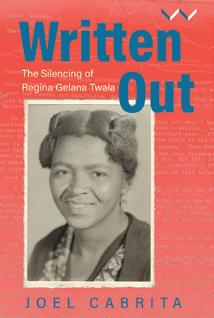
Cabrita’s call is for Twala’s story to be a pushback on current-day patterns of research and knowledge production that are dominated by the global North. She says publishers should also issue revised editions of books to include and acknowledge contributors like Twala.
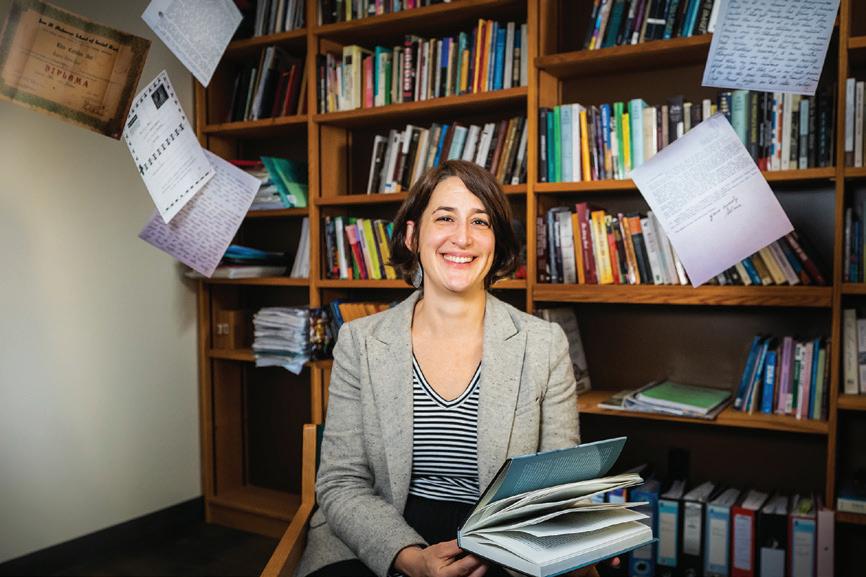
Wits University Press has published Cabrita’s book this year. It makes the book’s success also about personal questions of power dynamics and privilege, she says. But Cabrita also knew the book had to be written, as if urged on by Twala as spirit collaborator.
In researching the biography, Cabrita has been united with Twala’s only surviving grandchild. “Pinokie [Gelana Twala] looks so much like her grandmother it’s uncanny. She’s also a traditional healer and she believes her grandmother wanted me to write this book and that Regina is guiding this process. Knowing this means a lot to me.”
68 Wits Review April 2023
Historical Feature
Above: Historian Joel Cabrita surrounded by documents she drew from for her book about Regina Twala
“Regina’s personality jumped off the page. She was both angry and hopeful. She raged against the injustices faced by black people in 1930s southern Africa and hoped for nothing less than to become a famous writer and intellectual.”
Image: © Stanford University
One more silenced literary figure
Worthy of being told
of 13, only making intermittent trips back to South Africa. Her first memoir Drawn in Colour: African Contrasts was published in 1960. Between 1961 and 1962 she was the editor of The New Strand magazine in London and in 1963 she published The Ochre People: Scenes from a South African Life. Jabavu returned to South Africa in 1977 and died on 18 June 2008 at the Lynette Elliott Frail Care Home in East London.
Earlier this year Noni Jabavu: A Stranger at Home (NB Publishers, 2023) was released and retrieved from the archives by Xaba and Athambile Masola. It is a compilation of Jabavu’s columns written in the 1970s for the Daily Dispatch

Makhosazana ‘Khosi’ Xaba (MA 2007) is an award-winning South African anthropologist, poet and storyteller. Born in Greytown, KwaZulu-Natal, she trained as both a midwife and a psychiatric nurse. She was awarded an honorary doctorate by Rhodes University in 2022 and is currently commissioned by the Tricontinental Institute for Social Research to translate Frantz Fanon’s The Wretched of the Earth into isiZulu.
During her master’s in creative writing at Wits in 2004, she began her long-term project writing the biography of Helen Nontando Jabavu (1919-2008), an overlooked literary figure in South Africa. Since then, Xaba has painstakingly worked to have Jabavu’s life and work more widely recognised.

“Noni Jabavu’s life and work raise questions about the ways in which Black women’s intellectual labour occupies a precarious position of a constant threat of erasure unless researchers travel to and through the archive in order to prevent that erasure,” Xaba writes in the Imbiza Journal for African Writing.

Jabavu is described as a cosmopolitan, free-spirited woman who was born in Fort Hare, Eastern Cape and lived in England from the age
Xaba writes: “The journey of re-introducing Noni Jabavu’s work after decades of silence suggests that erasure happens because of decisions which are made about whose story is worthy of being told and whose work is worthy of being used and reused.”
69 Historical Feature
Noni Jabavu
Makhosazana Xaba
In Memoriam
1937-2022
Richard
Richard “Dick” Enthoven was a distinguished, if reclusive, South African entrepreneur and philanthropist, who died on 2 December 2022 after a battle with cancer.
Born in 1937, Enthoven was the son of Dutch immigrant insurance broker Robert Enthoven, whose insurance brokerage business started in
the 1950s and evolved into Hollard. Richard, in turn, was instrumental in building iconic South African and international businesses, including Auto and General, Nando’s, Direct Axis, & Beyond and Spier Wine Estate.
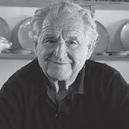
In 1970 he was elected as a member of the Transvaal Provincial Council and in 1974 he became a member of parliament for the United Party, but was expelled in 1975 for “disloyalty”.
He was a renowned lover of the arts and supported many South African artists, as well as building art institutions. He provided the generous catalytic funding for the Wits Art Museum as well as the Johannesburg Contemporary Art Foundation, a
non-profit organisation whose mission is to play a role in globalising contemporary South African art. Enthoven’s passion for architectural heritage resulted in the restoration of one of Johannesburg’s important heritage sites, Villa Arcadia.
Wits bestowed an honorary doctorate in commerce on him in 2021. His favourite quote was “the gratification of wealth is not found in mere possession or in lavish expenditure, but in its wise application”, from the novel Don Quixote
Enthoven is survived by five children and 14 grandchildren.
Sources: Wits University and News24
1940-2022
Carmela
The last remaining Holocaust survivor in KwaZulu-Natal, Carmela Heilbron, née Heyman (BA 1962), died on 13 January 2023. According to the Wits archive, she was born in Kaunas, Lithuania in 1940. She had a traumatic childhood, growing up in the Kovno ghetto during World War II, and was smuggled out with
the help of the Catholic Church. Heilbron, like many children, was handed over to the Red Cross at the end of the war. She reunited with her mother and sister, who had been sent to Auschwitz, and the trio moved to Tanzania. Most of her immediate family died during the Holocaust.
The Wits archive indicates she matriculated from Ndola Government School in Zambia in 1956 and studied at Wits between 1957 and 1961.
In 2008, Heilbron became a guide at the emerging Durban Holocaust & Genocide Centre and continued to volunteer there until 2014. Her experience is recorded in the digital record of experiences of 34 Holocaust survivors who found
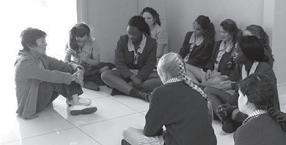
refuge in Portraits of Survival Volume 1: The Holocaust. In it she says: “Take a good look at what’s happening around you. Don’t ever turn around and say it’s not there because it’s not affecting you. The important message is to take action. Speak up, because when you don’t speak up, it just compounds itself into a hideous situation.”
She married Lew Heilbron and had two children. Her daughter, Mandy, passed away at the age of 36. She is survived by her husband, son Steven and her grandchildren.
Sources: Wits archive, SA Jewish Report, Durban Holocaust & Genocide Centre
70 Wits Review April 2023
We fondly remember those who have gone before us
Heilbron (MBBCh 1950, MMed 1968) ---------------------------------------
Enthoven (DCom honoris causa 2021)
Philanthropist and attorney Michael Javett died on 17 November 2022 at the age of 86 at his home in Johannesburg.
After completing his law and business studies at Wits he practised as an attorney at Webber Wentzel. He then moved to London to join international law firm Allen & Overy and subsequently pursued a career as a merchant banker at Hill Samuel. He returned to South Africa and
established the Unisec Group, which was later sold to Standard Bank. He also established Tolux SA, which has since become Brait. From 2006 he focused on philanthropy and was instrumental in establishing the Javett Foundation in 2013. The impetus behind its establishment can be traced back to the philanthropic activities of his parents Samuel (MBBCh 1926, MMed 1940) and Rebecca (“Chix”). Chix was central to shaping the family’s early philanthropic activities, instilling a commitment to social change and development. Javett went on to collaborate with the University of Pretoria to form the Javett Art Centre in 2019. He passed away a few days before the launch of Mihloti ya Ntsako (Tears of Joy) – Journeys with the
Bongi Dhlomo Collection (2022), an art project which chronicled a compendium of 138 artworks produced in the 20th century by both well-known and lesser-known South African artists. He advocated for greater access to art education for youth from diverse backgrounds.
Javett was also a great horse racing fan. He purchased the horse “Politician”, which won 18 races, notably the J&B Met and Queen’s Plate, as well as the 1978 Rothmans July Handicap. Politician was named South Africa’s Horse of The Year three times.
Javett’s Wits-trained brother Stanley (MBBCh 1956) died in 2000 at the age of 67.
Sources: University of Pretoria, Javett Foundation and Wits archives
technology of removing nutrients from wastewater, Davis had a skill set that was sought after in Australia. He emigrated to Sydney in 1984 to work at a treatment plant to help Australia adopt the new technology. He then joined Aquatec Maxcon, expanding his experience in water and wastewater technology and equipment.
association in the 50 years of water in Australia: 1962 to 2012 publication, an extensively researched history of water during AWA’s first 50 years.
The Australian Water Association’s (AWA’s) first full time chief executive officer, Dr Christopher Davis, passed away on 10 February 2022, after a long battle with Parkinson’s disease.
Davis grew up in South Africa and completed his degree in civil engineering at Wits. He went on to complete his master’s at the University of Texas and was awarded the international Hatfield Award for Professionalism from the Water Environment Federation.
Working for engineering company GHD in South Africa, one of the leading countries at the time in the
Davis joined the Australian Water and Wastewater Association and, through his leadership skills, quickly rose through the association. He was appointed its first full-time chief executive in 1992 and devoted his efforts to transform and energise the association. This included his overseeing the rebranding of the organisation as AWA in 1999.

He championed a sustainable approach, and set out an independent path as a spokesperson and advisor, meeting and consulting with politicians and policy makers, as well as with corporate members in need of a balanced industry voice. He documented much of the history of the
Davis was diagnosed with Parkinson’s disease in 2004 and decided to take his leadership and advocacy experience into working with Parkinson’s NSW. He served as president of the organisation from 2010 to 2014 and played an active role in promoting and supporting Parkinson’s understanding and research. In his farewell note as president of Parkinson’s NSW, he said: “I subscribe to the position that, while I have Parkinson’s disease, it does not have me.”
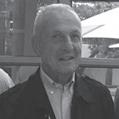
In January 2023 he was posthumously appointed a Member of the Order of Australia for his “significant service to water management” in that country.
Source: Australian Water Association
In Memoriam 71
Christopher Davis
---------------------------------------
1936-2022 Michael Javett (BCom 1957, LLB 1959)
Marcus Holmes, principal partner of the architectural practice Fassler Kamstra + Holmes Architects, passed away on 9 November 2022 after a short illness.
Holmes was born in Oxford, England but settled in South Africa with his parents in the 1950s. He was
skills: deep knowledge of the making of buildings, a passion for the building heritage of Johannesburg and fastidious attention to detail.
Shortly after graduating, he joined the practice of Mira Fassler Kamstra to create the firm of Fassler Kamstra & Holmes.
The partnership undertook restoration work on heritage homes and major public and commercial buildings. The practice list of projects is lengthy and includes the following conservation architecture projects: Blackroofs, Dolobran, the Customs House, the Rissik Street Post Office, The Pines, Johannesburg Art Gallery, Johannesburg City
builder-architect” which he saw as most necessary for the making of fine buildings. He said that most architects were excluded from that opportunity. His approach to heritage restoration was often to aim for a seamless transition between old and new; not for him the distinctive juxtaposing of modern contrasting additions.
Holmes contributed much to the profession. In his early days he was a member of the Transvaal Institute of Architects Education Action Group and the TIA Heritage Committee. He was a trustee of the Friends of the Johannesburg Art Gallery from 1989 to 2013. Most recently he was part of the initial committee formed to shape the Herbert Prins Colosseum Award in its re-launch as a Gauteng Institute of Architects Award.
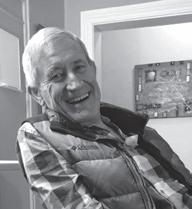
educated at St Andrew’s College in Grahamstown (now Makhanda), where he obtained a first class matric in 1969. He originally thought he would study engineering but pursued a career in architecture instead.
He will be best remembered for his work in conservation architecture, where he brought together a range of
Hall, Johannesburg Library, Casa Bedo, Case Dobe, Prynnsberg Manor, Darjeeling House, Piccadilly Mansions, Oxford Manor, Chancellor House, Ravenscraig and Lauriston Court.
Holmes said he was happiest while physically involved in construction, taking on the role of “the master
Glenhazel, Johannesburg.
He was born in Kroonstad in 1927 and attended high school at Jeppe Boys. He enrolled for a chemical engineering degree at Wits in 1944, but switched to law the following year, despite his excellent results.
He had an agile and creative mind and was a master of conceptualising unusual possibilities in heritage projects. His capacity for work was prodigious.
He is survived by his original partner Mira Fassler Kamstra and their shared family.
Henry Nathanson, the last surviving member of the famous law class of 1949 that included Nelson Mandela (LLD honoris causa 1991), passed away peacefully on 3 December 2022 at his home in
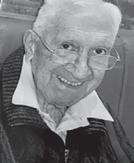
Articled to Max Pinchuk at Wertheim & Becker, he later started his own firm of Nathanson Bowman & Nathan. He enjoyed a successful career as an attorney, notary and conveyancer in Johannesburg for 50 years.
He was a keen bowls player, but also enjoyed watching rugby and
cricket and playing bridge, and was a keen amateur philatelist. He possessed a fine sense of humour and was able to lighten up a difficult moment with a suitable amusing quip. He was very pleased to attend the 1949 Wits Law Class Reunion in 1996 that Mandela also attended.
His wife Sheila predeceased him, as did his two sons Irwin and Mark, and he is survived by his daughter Anne Wilkinson.
Source: Sarel de Klerk
In Memoriam 72 Wits Review April 2023
Sources: Mira Fassler Kamstra (BArch 1961), Kathy Munro (BA 1967), Heather Dodd (BArch 1992)
Holmes said he was happiest while physically involved in construction, taking on the role of “the master builder-architect”
Henry Nathanson (BA 1947, LLB 1949) ---------------------------------------
Marcus Holmes (BArch 1977)
Dr Graeme Hart was born in Pietermaritzburg and spent his early years in Howick. He matriculated from Hilton College in 1954 and was an assistant teacher at Treverton College before attending Rhodes University to obtain a bachelor of arts degree in 1959 and a first-class honours degree in geography in 1960. After a temporary lectureship at Natal University (now the University of KwaZulu-Natal) he was appointed as a junior lecturer at Wits in 1961.
While at Wits he completed a master’s in 1965 and was awarded a PhD. He subsequently became a senior lecturer in the Department of Geography and Environmental Science until his retirement in 1997. Although Dr Hart taught synoptic meteorology and air pollution climatology to postgraduate town and regional planning students, his main interest was in economic geography and his speciality was in the urban

residential housing market. He’d been at Wits for 36 years when he retired at 60.
In 1962/3 Dr Hart was chosen to be an Abe Bailey Fellow and toured the United Kingdom. He published in several academic journals, contributed to seven books and was a visiting professor in California and Wisconsin. He attended conferences locally and internationally and acted at various times as editor of the South African Geographical Journal. For many years he wrote a weekly article for The Star on the demographics of various Johannesburg suburbs. He was a consultant in several weather-related court cases and also consulted to firms of geotechnical engineers. He hosted many geographical excursions for undergraduates which were very popular. Many students at Wits remember him as chief invigilator for their examinations – his last few years being chief invigilator in Hall 29. He also supervised many international examinations, for example the SAT.
In 1965 Dr Hart was appointed assistant dean of Dalrymple House, a men’s residence on the Wits Campus where he lived for five years. In the mid-1970s, together with John Earle, Tim Hart and Cathy Caselli, he joined the SABC’s pioneer weather
psychology. After graduating she worked at the American Information Library and later at the Teachers’ Training College. These were the post-war years and many of the enrolments at that time were returned servicemen embarking on a career in teaching.
team and was the first person to do a weather forecast on the SABC’s inaugural service in 1976. He remained a weather presenter for 27 years and always dressed impeccably in suit and tie. After he retired he was sought after as a speaker for public lectures about the weather.
Dr Hart was a keen hockey player: he played for the first team at Hilton, toured Zimbabwe with a Hilton/Michaelhouse side, was in the first team at Rhodes and played for Eastern Province. He went on an SA Universities tour to the UK and Europe in 1958 and captained the SA Universities tour to Kenya in 1960. While a junior lecturer he played hockey for Wits and enjoyed social tennis for many years. Dr Hart loved hiking and in later years slackpacking. He loved the bush and had many visits to the Kruger National Park and game reserves in the Waterberg, Botswana and Namibia.
Dr Hart suffered from dementia in his last few years and died on 14 March 2022. He is survived by his wife Margaret, née Richardson, (DipNursEd 1972, DipNursAdm 1981, MScNurs 1995), children Andrew, Richard and Diana, and seven grandchildren.
Source: Margaret Hart
where Raymond was the medical superintendent of Bloomfield Hospital, a specialist psychiatric hospital.
Doris Sandig, née Myerson (BA 1945), died on 29 June 2022. She graduated from Wits in 1945 with a BA, majoring in economics and

Doris married Raymond Sandig (MBBCh 1945) in 1948. They had four children, Colleen, Gail, David, and Jonathan. The family emigrated to Australia in 1981 and spent ten years in the regional city of Orange,
Doris spent her later years in St Ives in Sydney. She maintained a strong interest in reading, language studies (especially French), people, cultures, and the preservation and protection of animals. She valued education highly and instilled these values in her children and grandchildren.
Source: Sandig family
In Memoriam 73
---------------------------------------
Doris Sandig (BA 1945)
--------------------------------------
Graeme Hart (MA 1966, PhD 1975)
Professor Gavin Norton (BSc 1982, MBBCh 1986, PhD Med 1993), a much loved and respected member of the Wits staff in the Faculty of Health Sciences, died on 1 December 2022.

Prof Norton joined the University as a junior lecturer in 1989. Four years later, he founded and became the director of the Cardiovascular Pathophysiology Research Programme, which subsequently grew into the Cardiovascular Pathophysiology and Genomics
Research Unit in 2001. An offsite satellite research group, the Cardiovascular Pathophysiology Research Unit, was set up in 2018.
He was described as “a true clinician scientist” by colleagues and made an immense contribution to the understanding of cardiovascular pathophysiology, hypertension and heart failure. Prof Norton received a South African Medical Research Council Gold Medal for excellence in research and was one of the 30 inaugural honorary fellows appointed in 2021 by the International Union of Physiological Sciences for “exceptional contributions to physiological sciences” in the form of significant original discovery and sustained excellent contribution to scholarship.
He was a formidable researcher and had a great passion for the teaching and training of students. He had a knack for explaining complex physiological concepts in
simple but accurate terms and was awarded the Phillip V Tobias accolade as a distinguished teacher. His fatherlike approach to postgraduate training made him a well-loved supervisor and mentor among all his more than 50 research master’s and PhD students. His graduates are in prominent academic and industrial positions and bear testament to the quality of education he delivered.
His family said he “was a real beach bum who enjoyed swimming and surfing”. He also loved movies and had an impressive collection of DVDs of his favourite actors. Few knew he was an avid painter and sculptor and a fervent visitor to museums. His many travels across the globe made him a fountain of world knowledge and a fascinating storyteller.
Sources: School of Physiology: Prof William Daniels, Prof Angela Woodiwiss and Dr Vernice Peterson
returned to Johannesburg, Professor Isdale completed her internship at the Johannesburg General Hospital and worked as a casualty officer while raising her family.
Professor Joy Isdale (MBBCh 1950, MMed 1968) died on 3 November 2022 in Toronto, Canada, after a long illness. Professor Isdale was born in Johannesburg, matriculated from Johannesburg High School for Girls in 1945 and qualified as a doctor in 1950. During her third year (over a dissecting table) she met Leo, “Len” Stein (BSc 1940, MBBCh 1944), whom she married. The couple spent two years in London and Edinburgh, where Stein qualified as a surgeon. When they
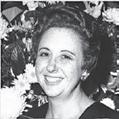
In 1965 she specialised in diagnostic radiology and worked first as a clinical assistant and then as registrar in the x-ray department at the Johannesburg General Hospital. In 1970 she was appointed as principal radiologist at the Transvaal Memorial Hospital for Children. She was soon appointed head of paediatric radiology, becoming the only paediatric radiologist in the Transvaal. In 1988, she was appointed acting clinical head in the radiology department at Johannesburg Hospital.
During her stewardship she transformed the department into a leading clinical, teaching and research entity and was held in the highest regard by paediatricians, both within
the hospital and throughout South Africa. She is remembered as an enthusiastic and excellent teacher. She also had exceptional administrative abilities, running the x-ray department with authoritativeness, competence and kindness. She retired at the end of 1989 and emigrated to Israel. After Dr Stein’s passing, in 2002, she settled in Canada and reinvented herself as a bridge teacher and lawn bowls player, enjoying numerous other activities including theatre and travel.
She is survived by her three children Gwen Janit, Dr Brenda SteinColeman (BSc 1972, BSc Hons 1973, MBBCh 1976) and Mark Stein (BSc 1975, MBBCh 1978), six grandchildren and 11 great-grandchildren.
Source: Dr Brenda Stein-Coleman
In Memoriam 74 Wits Review April 2023
1928-2022
Joy Maureen Isdale (MBBCh 1950, MMed 1968)
---------------------------------------
Gavin Norton (BSc 1982, MBBCh 1986, PhD Med 1993)
Educationist, academic and friend of Wits University for over five decades, Professor John Bradley died on 28 December 2022.
Professor Bradley was born in Cheadle Hulme, Cheshire and joined the Wits School of Chemistry in 1964 after completing his studies at the University of Leeds, the University of London (King’s College) and his postdoctoral fellowship at Florida State University.
In the early 1980s, out of concern for educationally disadvantaged students, he spearheaded initiatives
to provide students with access to science education. These initiatives included an entry-level and a research programme in chemistry education. In 1990, Professor Bradley became director of the University’s Centre for Research and Development in Mathematics, Science and Technology Education (RADMASTE), a centre which developed maths and science education resources. He moved with RADMASTE when it was relocated to the Wits School of Education in 2003.
According to colleagues, he persistently challenged them “to think big, to think contemporary, and never to be complacent” about their teaching offerings. He was one of the co-creators of the Centre for Microscience Experiments associated with UNESCO, and helped establish the UNESCO-IUPAC Global Programme in Microscience.
Pietermaritzburg.
He published widely on research emanating from this area in the past two decades.
Professor Bradley served as the president of the South African Chemical Institute, as chairperson of the IUPAC Committee on the teaching of chemistry (1996-2001), and as chair of the ministerial task team responsible for developing a national strategy for maths, science and technology education. He was a finalist in the 2018 National Science and Technology Forum Awards and received the International Organization for Chemical Science in Development’s Pierre Crabbé Prize in 2003.

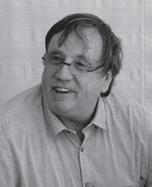
He married Elizabeth Le Roux Wessels in 1962 and they had three children, Richard, Jocelyn (BA 1989, BA Hons 1990, MA 1995) and Julia.
Source: Wits University
Renowned economist and inaugural holder of the Helen Suzman Chair in political economy at Wits, Professor Charles Simkins died after a long illness on 8 December 2022, 48 hours after his beloved wife Rae Gower.
After completing an honours degree in physics at Wits in 1970, he was awarded a Rhodes scholarship, and obtained a master’s in philosophy, politics and economics from Oxford University. He then completed a PhD in economics at the University of KwaZulu-Natal in
Professor Simkins was involved in civil society organisations and initiatives for the greater part of his life. This activism first appeared during his undergraduate days at Wits, when he was elected to the Student Representative Council as treasurer. He was involved in helping to create a non-racial trade union movement, which led to him being banned for five years under the Suppression of Communism Act until November 1976. He was given permission to relocate to the Pietermaritzburg campus, where he created the Development Studies Research Group. It was during this time that he met and married his wife.
After his banning order was lifted, he moved to Cape Town, where he joined the Economics Department at the University of Cape Town. Later he moved to Johannesburg to join the Urban Foundation, subsequently
working at Wits and St Augustine’s College. He joined the Helen Suzman Foundation in 2014, building up a research profile on a broad range of subjects such as health and land reform, infrastructure problems (including water and electricity) and constitutional issues, especially those surrounding electoral reform.
In a tribute to Professor Simkins, the historian RW Johnson said he was immediately struck by the “subtlety and complexity of his intelligence” when their paths crossed at Oxford. “He was a quiet, modest and very gentle man without political ambition”, who saw “opposition to apartheid as a moral imperative rather than a political act”.
For the last decade of his life Professor Simkins devoted himself to the care of his ill wife.
Source: Helen Suzman Foundation, Politicsweb
In Memoriam 75
Charles Simkins (BSc 1969, BSc Hon 1970)
1937-2022 John Bradley Former lecturer in the School of Chemistry
In Memoriam
grew into one of Australia’s largest independent fund management groups.
a Lifetime Achievement Award for his service as a philanthropist.
Philanthropist, animal activist, art collector and entrepreneur Brian Sherman died at the age of 79 on 11 September 2022 after a protracted battle with Parkinson’s disease.
He was born in Brakpan into a close-knit community of immigrants from Lithuania. According to the University’s archives he matriculated from Princeton College in 1962. He met his wife Gene, née Tannenbaum (BA 1969, BA Hons 1970) at Wits, and they had two children: Emile and Ondine.
The couple left South Africa in 1976 with their young children. Initially Sherman found work as a stockbroking analyst in the finance industry but he went on to create EquitiLink, a fund management business, from scratch with Gene’s cousin Laurence Freedman in 1981 around his kitchen table. The company attracted money from United States and Canadian investors and
In 2000, EquitiLink was sold to Aberdeen Asset Management with $5.5 billion under management. Sherman continued as chairman and joint managing director of the EquitiLink Group from 1981 to 2000, as well as director and chairman of ASX-listed Aberdeen Leaders Limited and several investment companies listed on the American and Canadian stock exchanges. He was part of a consortium that bought Ten from Westpac in 1992 and was a director from 1994 to 2007.
Sherman was on the board of the Sydney Organising Committee for the 2000 Sydney Olympic Games and chairman of its finance committee. After selling EquitiLink he became a prominent philanthropist, focused on the arts, medical science and the Jewish community. In 2004, he established Voiceless, an animal rights advocacy organisation, with his daughter Ondine.
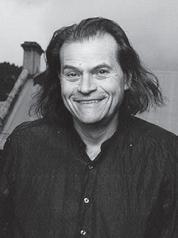
He shared his wife’s passion for art; together they became avid collectors for more than three decades.
In December 2020 he was made governor emeritus of the Australian Museum, and in 2022 the Australian Museum Research Institute gave him
He served as president of the Australian Museum Trust from 2001 to 2009, was a director of the Australia-Israel & Jewish Affairs Council, and chaired the Rambam Israel Fellowships programme.
He was awarded the Order of Australia in 2004, the Ernst & Young Entrepreneur of the Year award, an honorary doctorate from the University of Technology, Sydney, and in 2014 the B’nai B’rith Gold Medal, along with his wife, for outstanding humanitarianism.
He was diagnosed with Parkinson’s in 2010. He published The Lives of Brian Sherman: Entrepreneur, Philanthropist, Animal Activist (ReadHowYouWant, 2019) and Walking Through Honey: My Journey with Parkinson’s Disease (Booktopia, 2022). It provided a patient-centric insight into more experimental approaches to treating the disease and advocated use of the arts, including music, art and movement, for therapy.
He is survived by his wife Gene, film and television producer son Emile, daughter Ondine and six grandchildren.
Sources: Wits archive, ArtsHub, The Guardian, https://www.briansherman.com.au/
Emeritus Professor of Pathology at the University of Pittsburgh and former Chief of Pathology, Children’s Hospital of Pittsburgh, Ronald Jaffe passed away on 23 November 2022. After graduating from Wits, he completed residencies in pathology at Sheba Medical Center in Israel and Children’s Hospital in Boston and a fellowship at the Mallory Institute of Pathology, settling in Pittsburgh in the US in 1977.
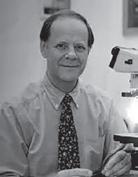
Professor Jaffe was an internationally recognised expert in paediatric
pathology and histiocytic disorders, served as the editor-in-chief of Pediatric and Developmental Pathology and was president of the Society of Pediatric Professionals in 2001. He was described by colleagues as a critical thinker with an exceptionally gifted “eye”.
He is survived by his wife Sandra, son and grandchildren.
Sources: Pittsburgh Post Gazette, Society of Pediatric Pathology
76 Wits Review April 2023
Ronald Jaffe (BSc 1966, MBBCh 1969)
Brian Sherman (MBBCh 1950, MMed 1968) ---------------------------------------
Dr Kenneth Roland Bloom, aged 79, died on 3 November 2022 at his home in San Antonio, Texas, surrounded by his family.
Dr Bloom was born in South Africa in 1943, to Grace Widman and Cecil Bloom. He attended the King Edward VII School and obtained his medical degree at Wits. He married Dr Sheila Swartzman (MBBCh 1966) in 1966 and in 1972 they moved to Cincinnati, Ohio for a fellowship in paediatric cardiology. In 1974 the family relocated to Canada, where he joined the faculty
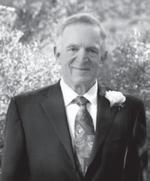
of The Hospital for Sick Children in Toronto.
In 1979 the family moved to San Antonio, where Dr Bloom became chief of paediatric cardiology and director of the Non-Invasive Laboratories at the Brooke Army Medical Center. In 1982 he was awarded a Meritorious Service medal by Executive Order for his service. From there he opened his private practice, Paediatric Cardiology Associates, where he worked for four decades, helping hundreds of children, and often their children, in San Antonio and throughout Texas. Throughout his life in San Antonio, he and his wife were enthusiastic advocates for the city’s vibrant classical music community. They actively supported the Chamber Music Society, of which Dr Bloom served as president, the San Antonio Philharmonic, the Youth Orchestra, the Houston Grand Opera, and just
national cricket team. After his schooling, he completed a master’s degree in English. It was here that he developed a passion for Anglo-Saxon literature, Chaucer and Shakespeare, whose plays he went on to study in great detail.
about every local classical music group they could. This brought endless joy to him.
Dr Bloom is survived by his wife of 56 years, Sheila, their children Dianne and Robert, Robert’s wife Rachel Griffiths, and two grandsons, Dominick and Heath.
Source: San Antonio Express-News
Tribute from Roger McCarter (BSc 1962, BSc Hons 1963, MSc 1965), Professor Emeritus at Pennsylvania State University: One can tell a good deal about an individual in weekly encounters on a squash court, especially when played over a period of almost 20 years! Skill, fairness, consideration, fierce determination to win and, overriding all, the joy of simply playing the game, were all hallmarks of Kenneth Bloom. It was my good fortune to share such experiences with this wonderful individual.
An internationally renowned expert on the history of the English language, Professor Geoffrey Hughes died on 30 October 2022. He started teaching in the English Department at Wits in the early 1960s and remained for the duration of his academic career.
Born on 20 April 1939 in Dar-esSalaam, where his father worked as an engineer, Professor Hughes was schooled in Kenya and England.
During his school years he was a keen rower and rugby player and was also selected for the Kenyan
Professor Hughes’ academic career began in the 1960s in the English Department at the University of Cape Town, where he lectured for two years – and much later returned as honorary research associate – before he moved to Wits, where he was later promoted to Emeritus Professor of the History of the English Language. Barry Ronge (BA 1968, BA Hons 1969) and Helen Zille (BA 1974, PDipEd 1974) were just some of the South African luminaries whom he taught. While at Wits he completed a doctorate at the University of South Africa on the semantic history of the English language.
In the 1970s, Professor Hughes

was an Honorary Research Associate at Harvard University, and in the following decade he began writing his “Watchword” column on the history of words for The Star newspaper, something he continued doing for 30 years until a few months before his death. Professor Hughes had two children – Alexander and Catherine – with his first wife Ursula. His second wife, Dr Jean Marquard, with whom he had a son, Conrad (PhD 2008), died of cancer at the age of 42. He married Patricia (Tish) Summers in the 1980s. It was Tish who introduced him to opera, and who also shared her love of Afrikaans literature and culture with him. They settled in Noordhoek. Early in 2022 Professor Hughes was diagnosed with Parkinson’s disease. He is survived by his wife, children and grandchildren.
Source: Lisa Jackson
In Memoriam 77
Geoffrey Hughes
---------------------------------------
Former lecturer in the English Department
---------------------------------------
Kenneth Bloom (MBBCh 1965)
1927-2022 David L James
David Leslie James, known as “Dave”, was born in 1927 and he lived his early childhood in mining company towns on the Witwatersrand such as Robertson Deep, Sub Nigel and Vogelstruisbult.
He went to primary school at Pridwin Preparatory School and later became a boarder at Michaelhouse in Natal, which he enjoyed, especially being set free to wander around the countryside on a Sunday. His family owns a letter he wrote to his mother at the time: “Dear Ma. Please send a small frying pan, some tins of bully beef and some small blocks of jellified methylated spirits. Love, David.”
In 1945 he started an engineering degree, but quit after about a month when he found the syllabus replicated what he had done the year before in sixth form and joined the war effort, stationed at the naval base in Saldanha Bay. The following year he resumed his studies at Wits, where he met his wife, Jenepher, in 1948, at a tennis party. He graduated with a BSc Mech Eng in 1950, and then with BSc Elec Eng in 1952. He started his master’s degree, working under the supervision of Costa Rallis (BSc Eng 1947, MSc Eng 1948, PhD 1963, DSc honoris causa 2003. He married Jenepher in February and they went to live in the married students’ quarters at Cottesloe. That’s where they met many of the people who became lifelong friends, like Tony and Joy Eagle and Dorothea and Gerald Zeffert (DipArch 1954).
James worked for the Centre for Scientific and Industrial Research briefly and then joined the Physics Department at Wits, where he worked as a lecturer for about 40 years, mainly teaching students in electrical engineering. He was much
loved and much appreciated by his students, one of whom observed that he was “one of the last of the old school of dedicated university teachers, unappreciated and undervalued by the authorities, who rendered enormous service to the generations of undergraduates they taught”.
In his leisure time he built boats, took groups of students and his family on skin diving and camping holidays in Mozambique, and eventually – after retirement – politely turned down an offer by the Physics Department to continue as a lecturer, and completed the building of a boat which he then sailed to the Comores, Madagascar and up the east coast of Africa as far as Kenya. A former Wits colleague described James as a “cross between Scott of the Antarctic and a slightly older version of a hippy – a sort of glorified tramp. Never happier than when sailing somewhere, travelling across the most inhospitable terrain of Lesotho or camping on some beach on which no-one has
previously set foot.”
After restoring the Stillbay holiday house that had belonged to his grandfather, he and Jenepher spent the last years of their retirement there.
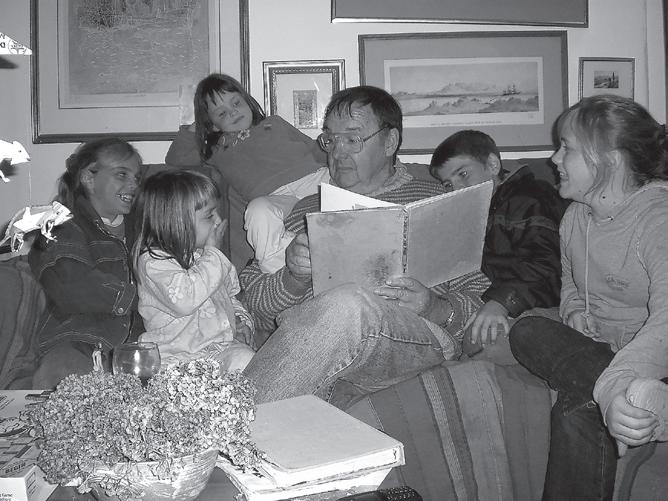
He kept in touch with his old friends, especially John Crawford (BSc 1959) and Eddie Price (BSc Hons 1960), both of whom predeceased him.
He died on 14 February 2023. He leaves Jenepher, four children –Deborah (BA 1975, BA Hons 1980, MA 1988, PhD 1994), Nicholas (BSc Eng 1981, GDE 1985), Simon (PDipEd 1986) and Melissa (BA 1986, BA Hons 1987) – and nine grandchildren.
78 Wits Review April 2023 See more and full-length obituaries on the alumni website: www.wits.ac.za/ alumni/obituaries/
Above: David James reading to five of his nine grandchildren
Source: Deborah James
(BSc Mech Eng 1950, BSc Elec Eng 1952)
In Memoriam
On the edge of now
By Professor Chris Thurman

The future has always been terrifying and inspiring in equal measure
Wits End
oomsday prognostication and dreaming of perpetual progress are both human habits as old as our species’ collective consciousness. Nevertheless, it is perhaps fair to say that The Future has never seemed quite so near. From climate crisis to the rise of Artificial Intelligence, from apocalyptic scenarios to tech-driven utopias, it feels like we live in a present merging with the horizon of what was supposed to be a distant future. The impact of this phenomenon is generationally marked; unsurprisingly, attitudes towards the future are inflected by different concerns expressed by parents and children. Recent surveys suggest that the majority of parents in countries as varied as South Africa, the United States, Greece and Japan fret about their children’s futures in economic terms –they believe that as adults their children will be worse off financially than they are. This collective pessimism is new. Moreover, it is discernible in countries both in the Global North and in the Global South, cutting across the developed and the developing world.
The children, on the other hand, are preoccupied with merely surviving. A 2021 study by researchers at the University of Bath surveyed 10 000 young people (aged 16-25) in 10 countries, and confirmed that “eco-anxiety” is the primary driver of their fears about the future and a major inhibitor in their daily lives.
My teenage daughter put it succinctly in a conversation with my wife and me that was starting to drift towards that convention of parental reassurance in which you tell your children, “I know what it’s like, I was your age once.” She reminded us: “When you were growing up, nobody told you that you might have to live on another planet because humans trashed Earth.”
Future-minded educators, in trying to prepare children for life in a rapidly changing world (or worlds), regularly inform them that the jobs they will do one day haven’t been invented yet – and that the careers they thought they might pursue will probably no longer exist in a few years’ time. This message may help to inculcate resilience and grit; it may encourage adaptability and the much-vaunted ability to “pivot”. But it can also be a killjoy.
My daughter, who previously harboured ambitions to be an author, has been told that somewhere between the launch of ChatGPT and the advent of GPT-4 the death-knell of human literary creativity was sounded. The dispiriting conclusion of what she has learned about AI text generation is, “There’s no longer any point in wanting to write a book when I’m older.” Worse still, this demotivating effect extends to all aspects of her reading and writing life. The unspoken question here is: If an act of human connection is at the heart of the meaning we get from books and other literary texts, but in the near future that will no longer be the case, then what’s the point of reading for pleasure at all?
There’s a wider (and potentially profound) discussion to be had here about the inadequate binary of Human versus Robot. If ChatGPT and GPT-4 work by scouring the internet as a vast repository of human knowledge and then compiling human-like responses to human prompts, is that still “machine learning”? Isn’t this just AI learning to recognise and imitate human consciousness – producing a much, much faster and more efficient version of what our limited brains can do? And if AI in the form of GPT-5 or -6 no longer requires prompting, but starts producing its own questions and giving expression to what we might call a creative impulse, is that fundamentally different to a human using language to wrestle with being?

Such a consciousness would be more than code, more even than a self-aware machine; an entity with this level of intelligence, the argument goes, would merit the protection of certain basic rights. Humanist scholars – in the Sciences and in the Humanities alike – tend to respond to that claim by emphasising the limitations on basic rights and freedoms, not to mention the material privation and physical suffering, currently experienced by so many people around the world. These kinds of questions about AI must, therefore, constitute a line of enquiry for another day.
“Today,” we say, kicking the can down the road, “We have classes to teach and committee meetings to attend. Students to counsel. Emails to send.” And we have assignments to mark, lots of them. But there’s the rub! Increasingly those assignments will be produced by, or with the help of, AI. Another day – tomorrow – is coming sooner than we think. In fact, it’s here today.
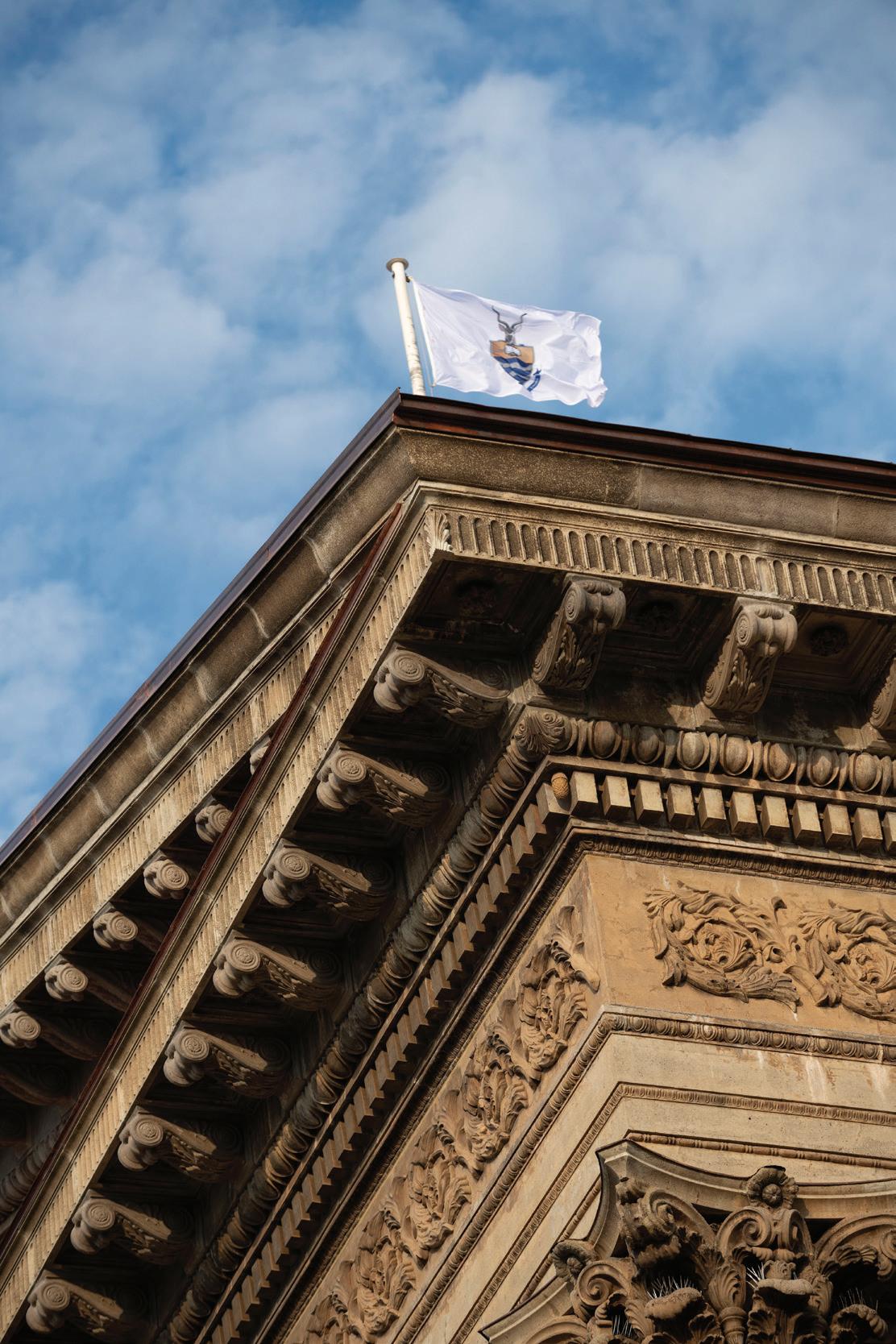
80 Wits Review April 2023
Chris Thurman is Professor in the English Department and director of the TsikinyaChaka Centre (School of Literature, Language and Media) at Wits.
Wits End

Contact: Justine Dangor on justine.dangor@wits.ac.za 011 717 9713 Leave a legacy As we embark on our next century of impact for good, please consider supporting the University by making a bequest to Wits
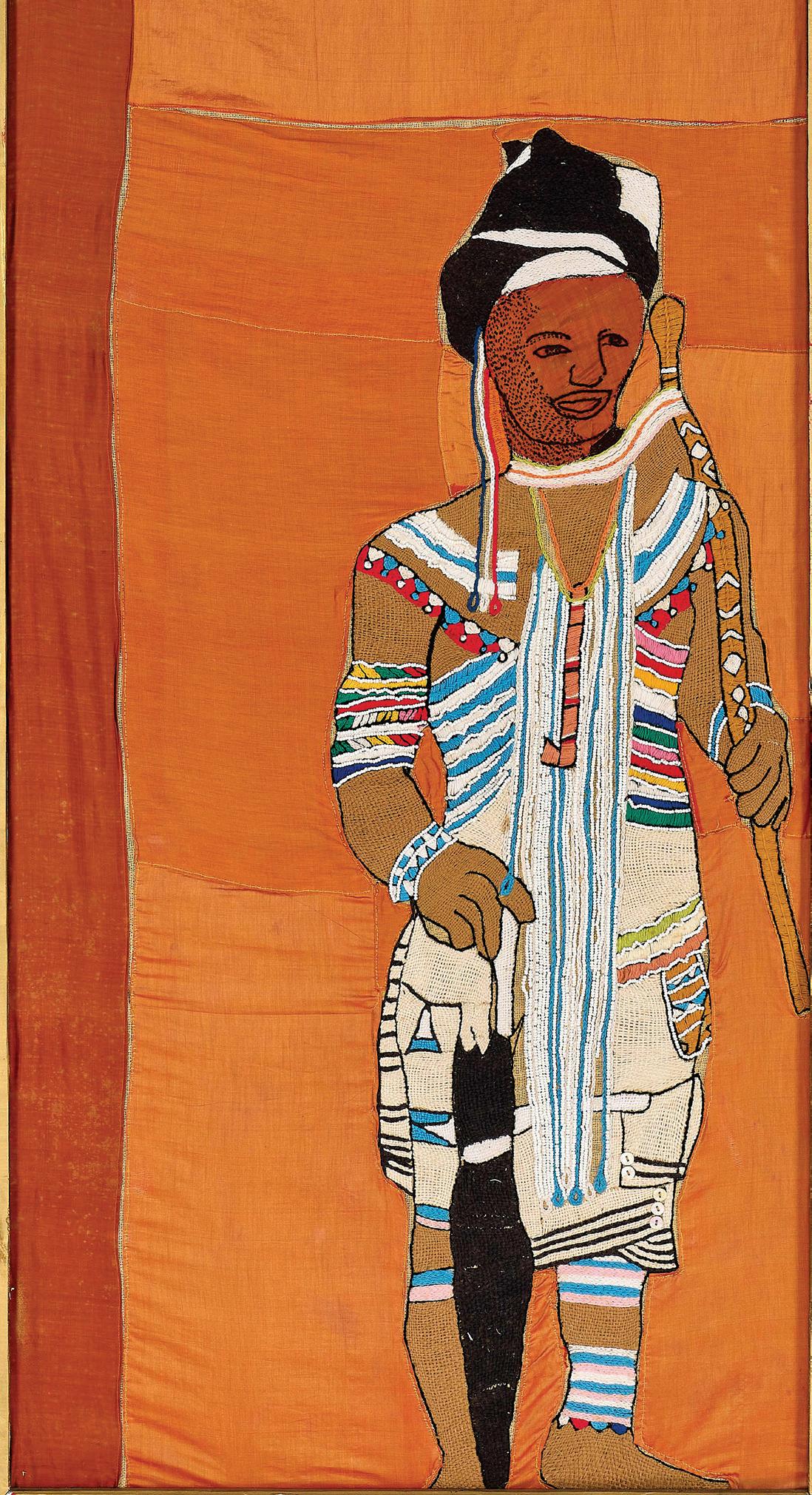


 Image: Brett Eloff
Image: Brett Eloff














































 Children from Alexandra township play on the banks of the Jukskei River
AFP via Getty Images
Children from Alexandra township play on the banks of the Jukskei River
AFP via Getty Images



















 Image: Brett Eloff
Image: Brett Eloff















 By Ufrieda Ho
By Ufrieda Ho


















 by Martin Plaut and Sarah Vaughan
C Hurst & Co Publishers Ltd, 2023
by Martin Plaut and Sarah Vaughan
C Hurst & Co Publishers Ltd, 2023

 by Dianne Hawker
by Dianne Hawker




 by Jarred Thompson
by Jarred Thompson





























